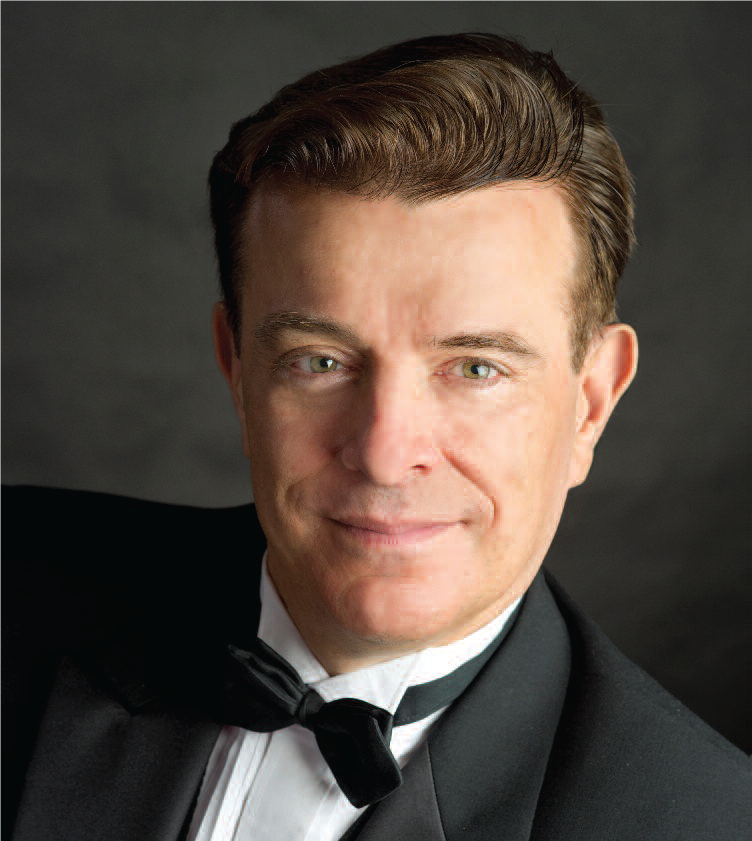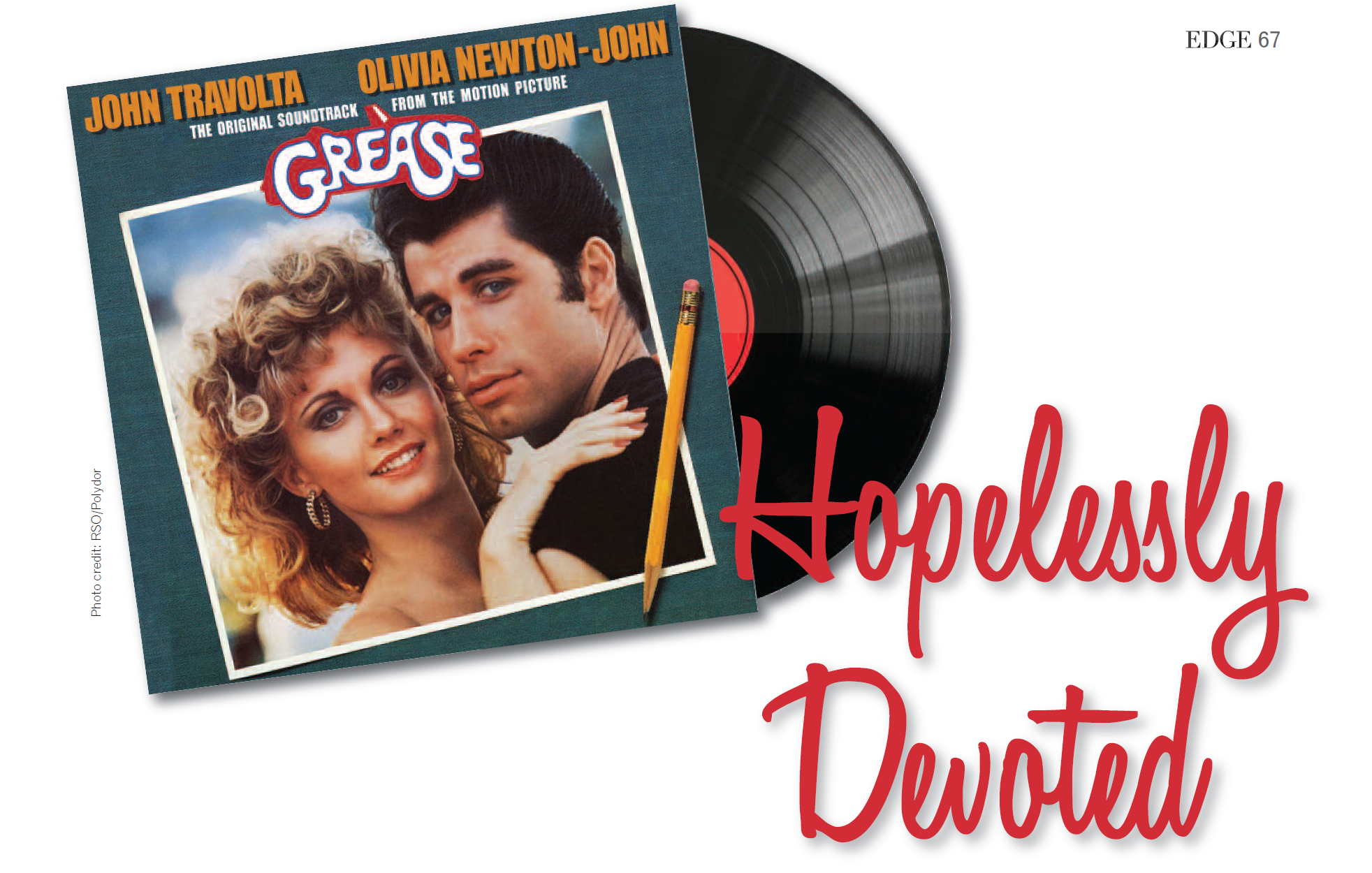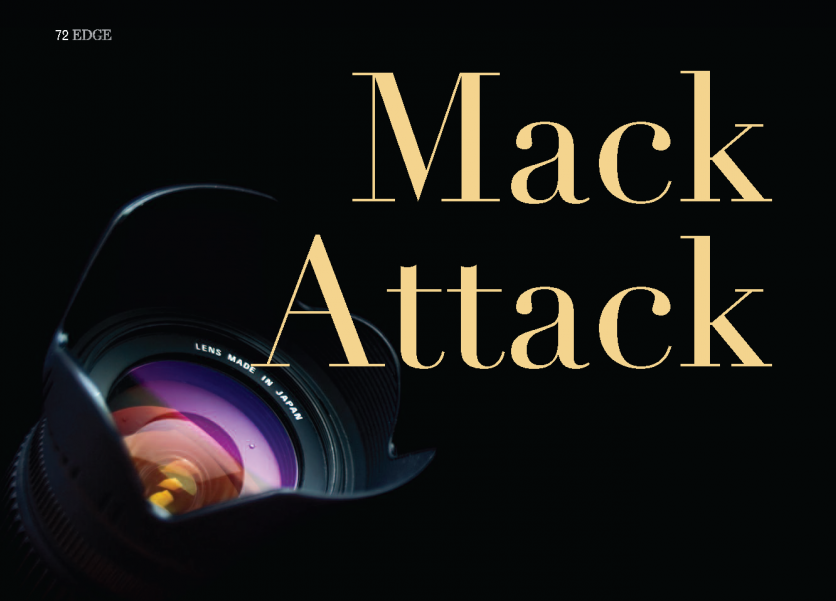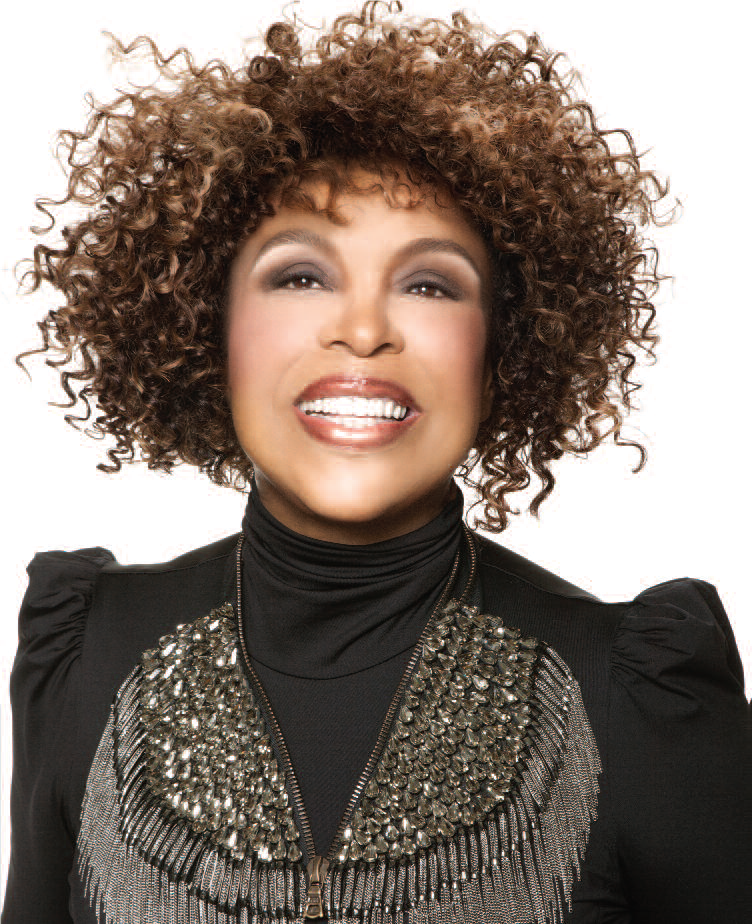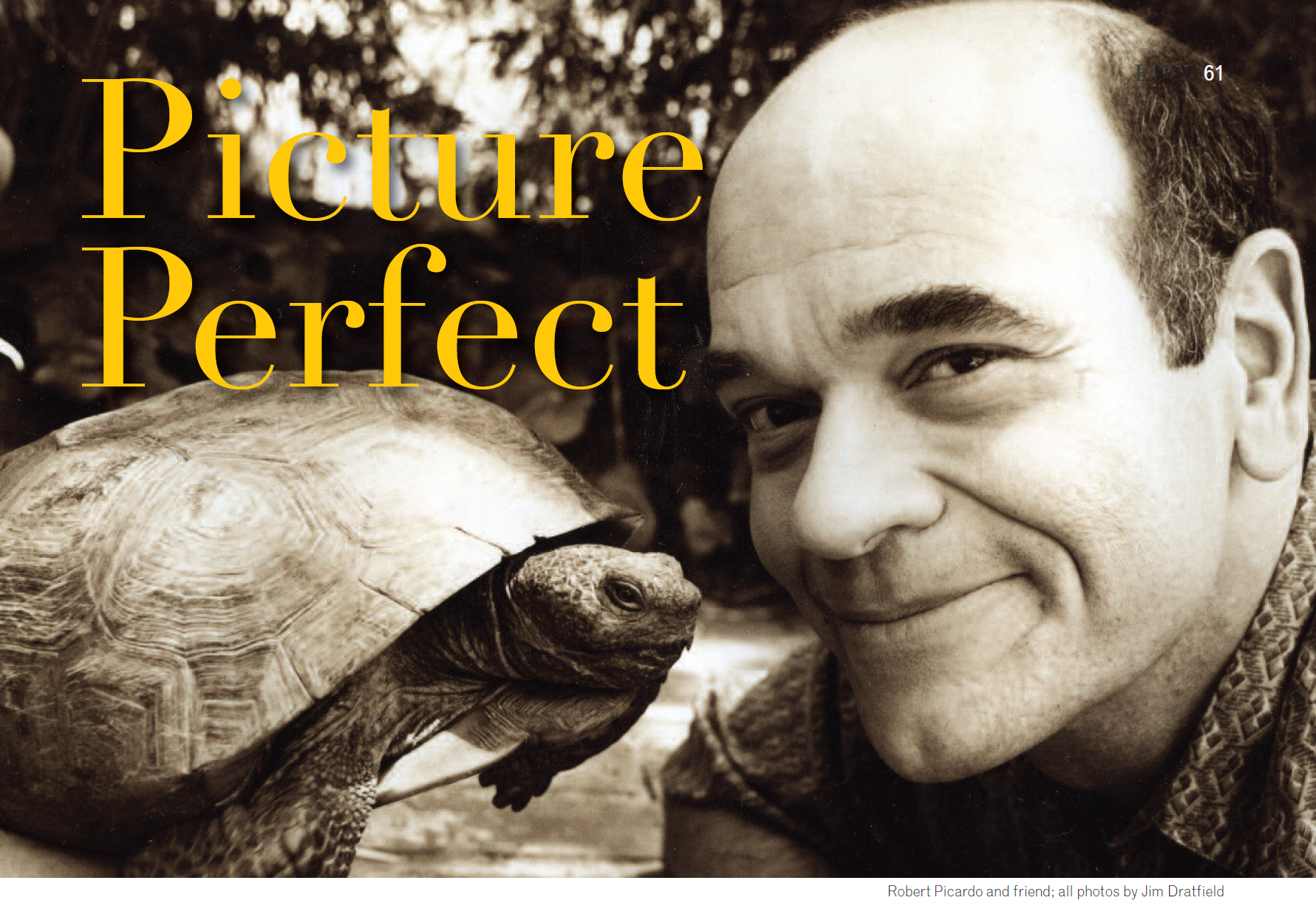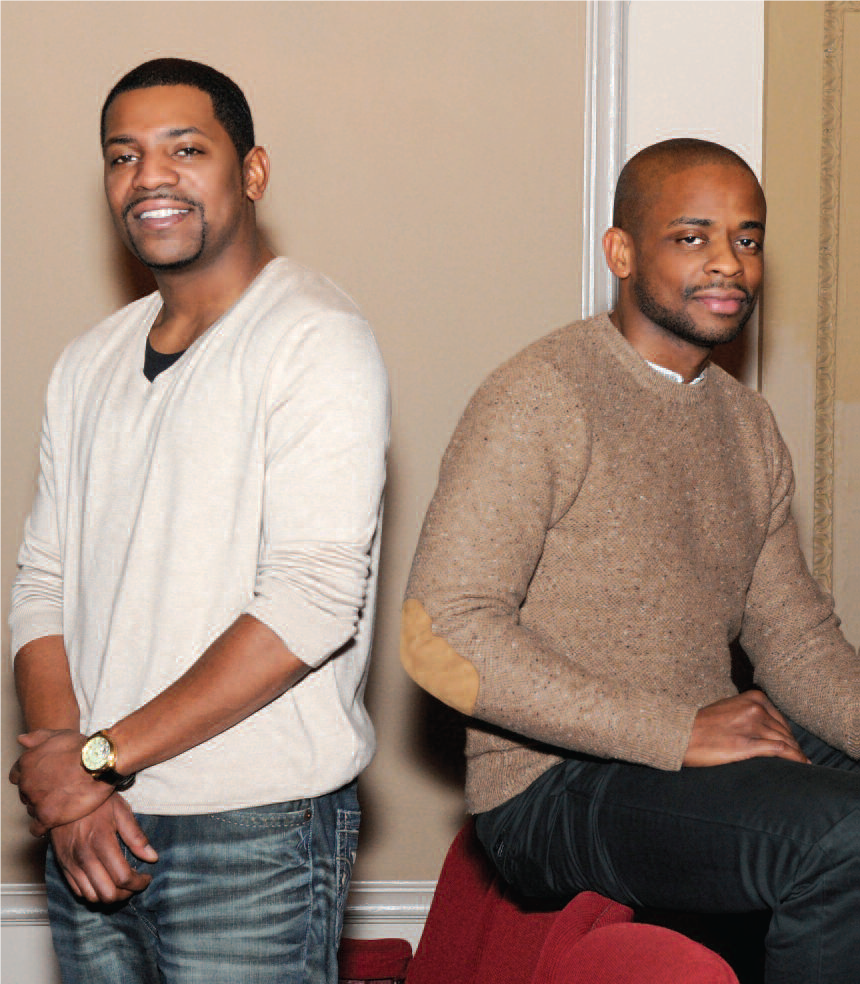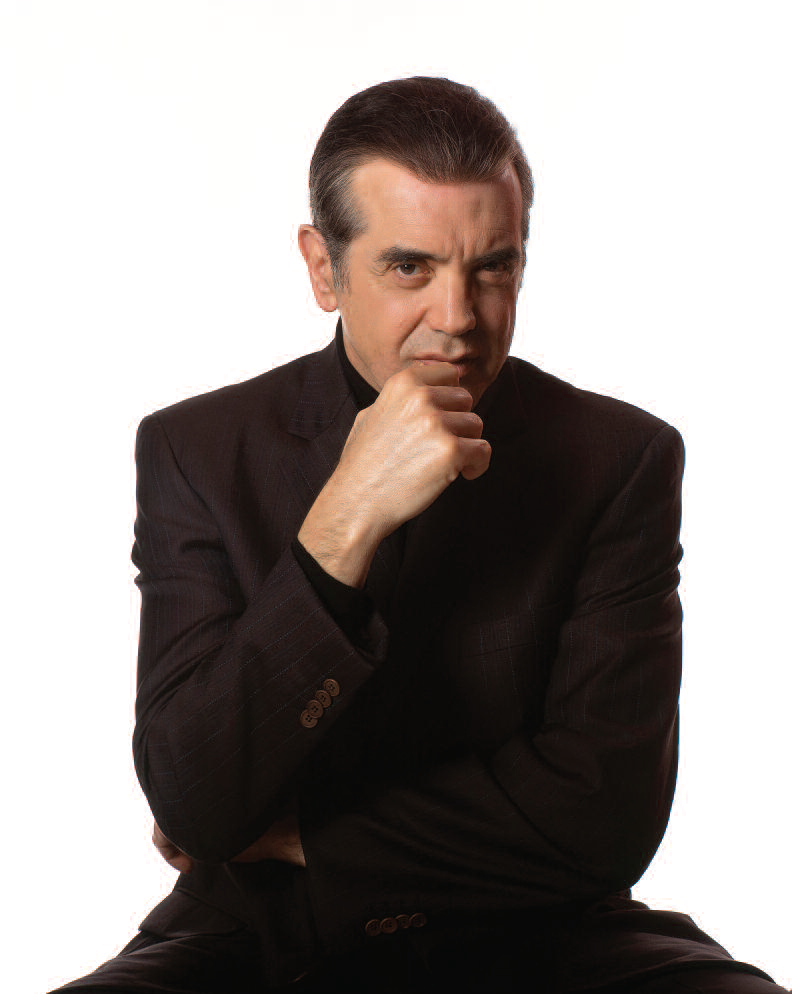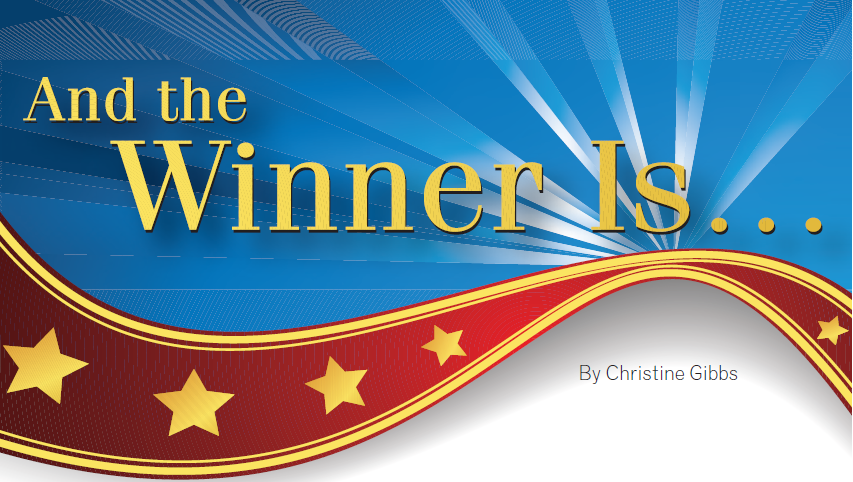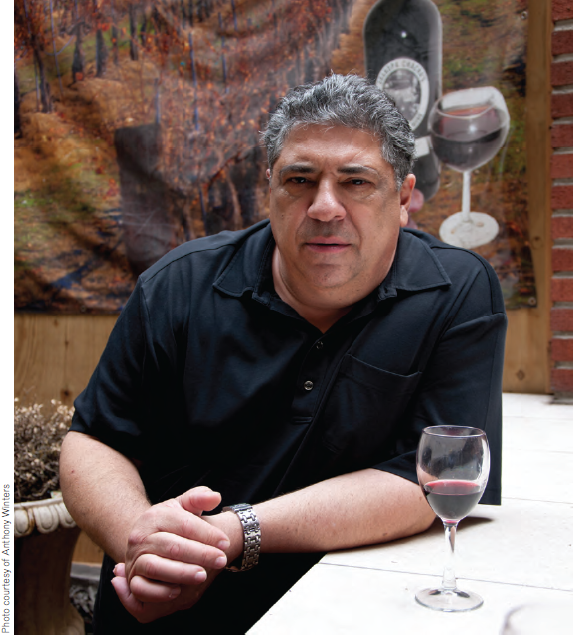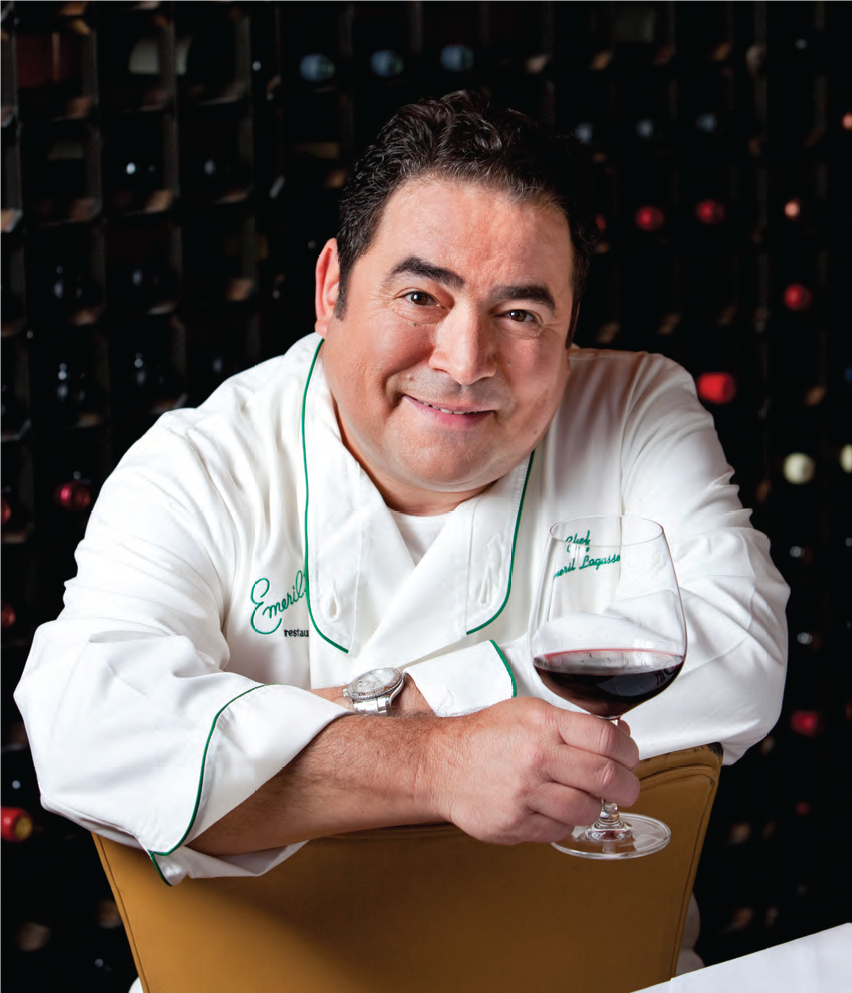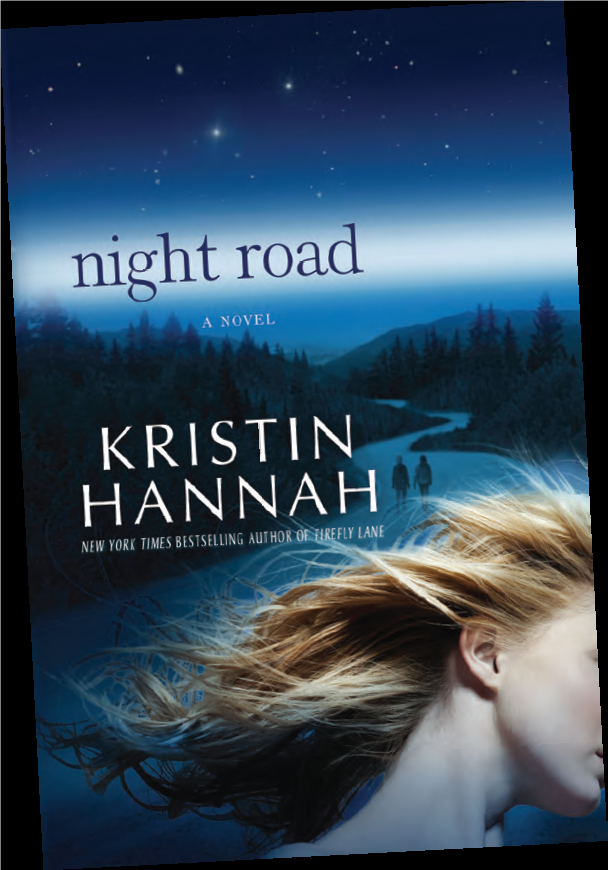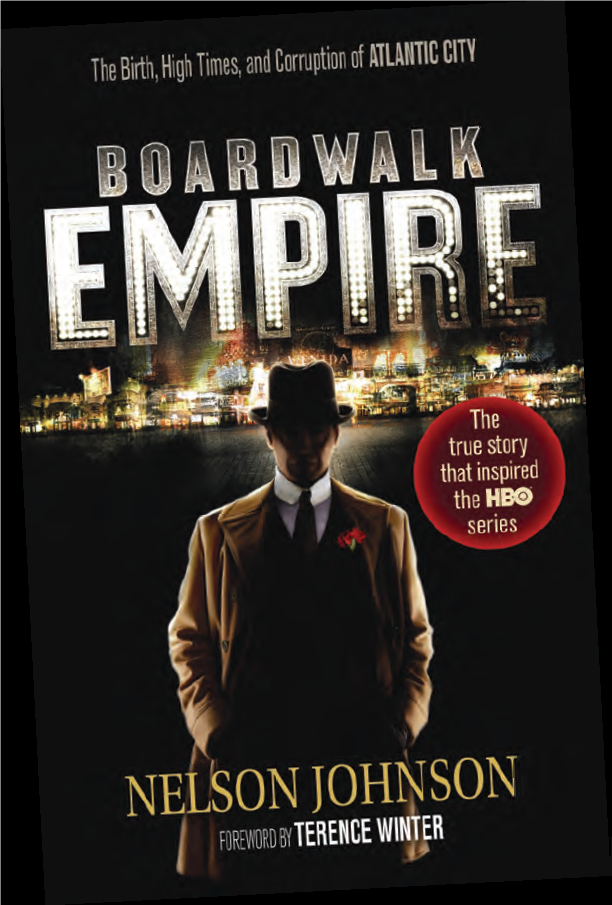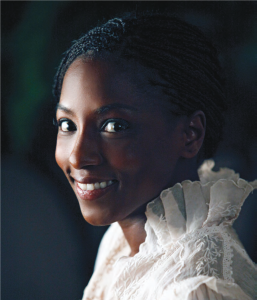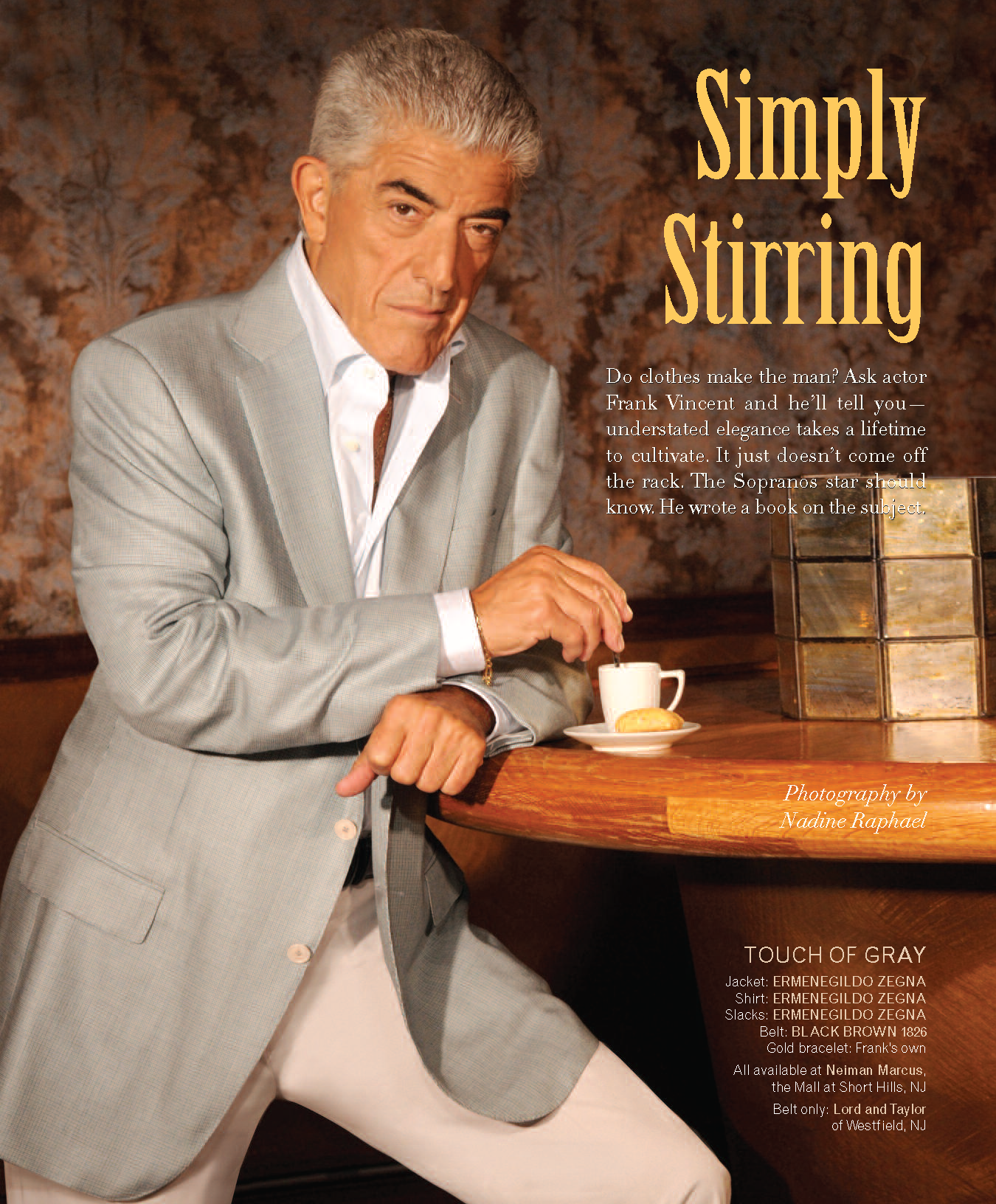

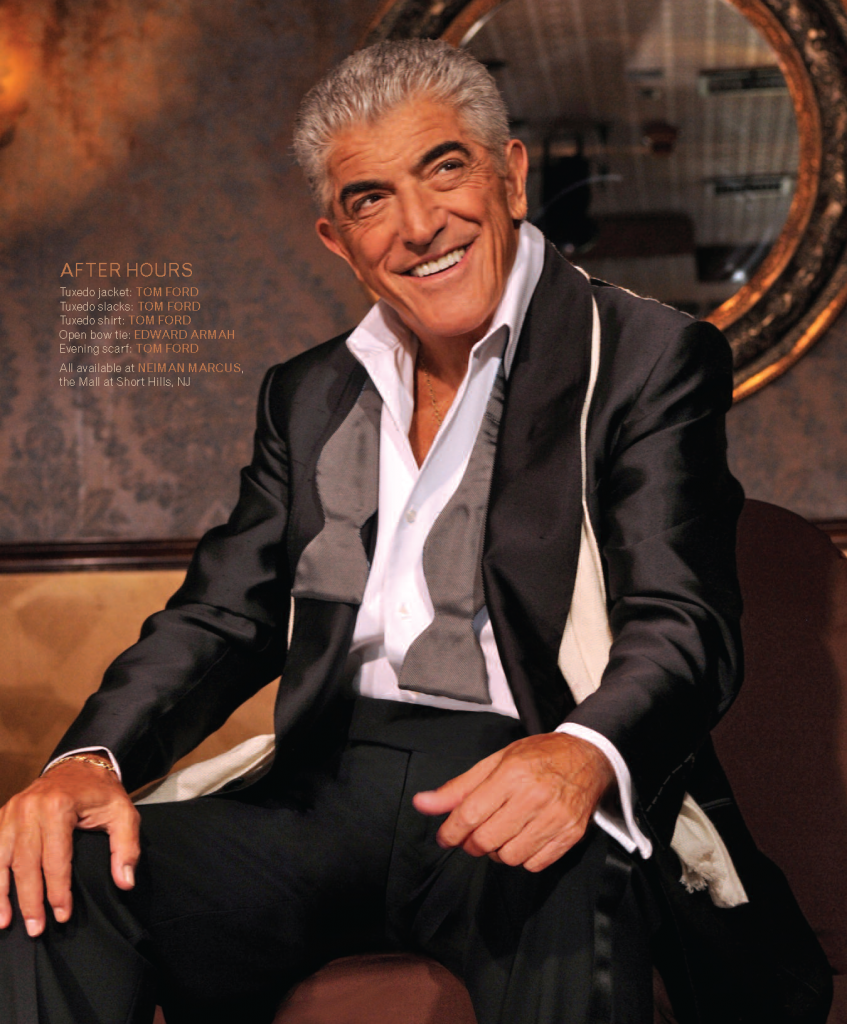


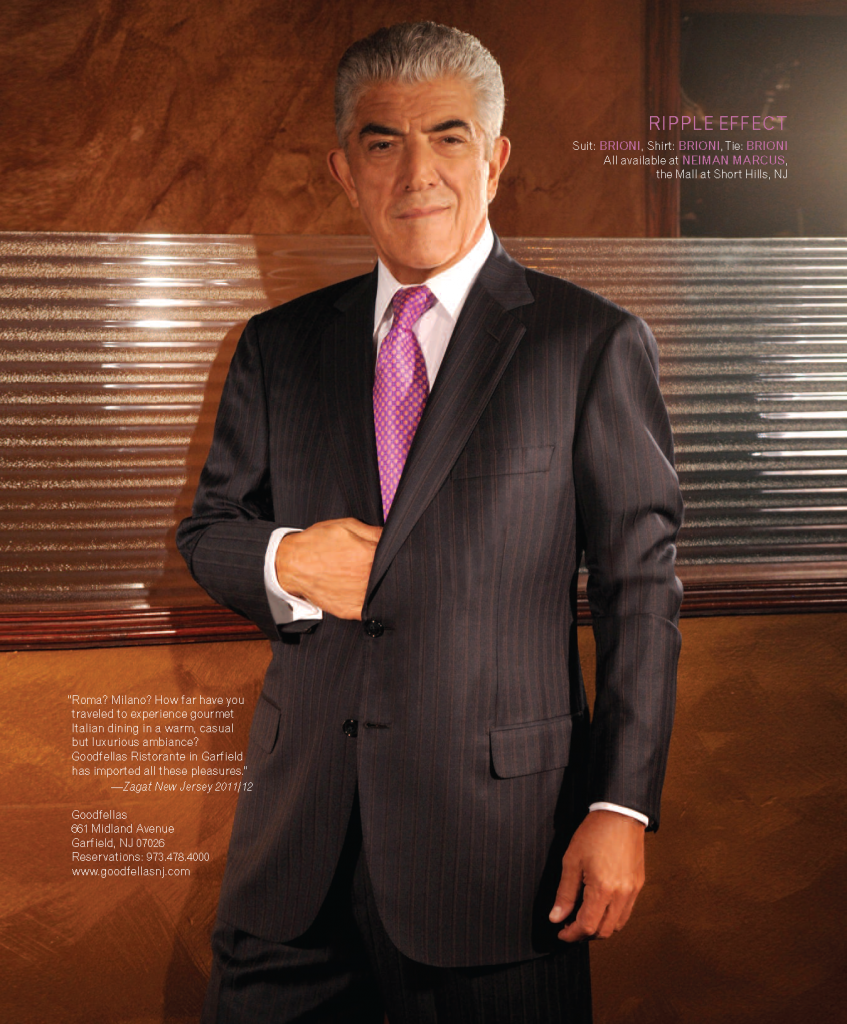

By the time students in New Jersey move into middle school, they have been thoroughly indoctrinated into the history, culture and infrastructure of the Garden State. Typically, this subject is taught as part of the Social Studies curriculum in fourth or fifth grade. The answers to these 20 questions can be found in any elementary school textbook…or you could just ask an 11-year-old.
The longest river contained completely within New Jersey is…
a) the Raritan River
b) the Shark River
c) the Hackensack River
The native people of New Jersey began farming the land…
a) about 10,000 years ago
b) about 5,000 years ago
c) about 1,000 years ago
The first European explorer to set foot on New Jersey soil was…
a) Giovanni da Verrazano
b) Henry Hudson
c) Cabeza de Vaca
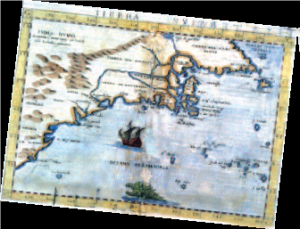
The first permanent Dutch settlement in New Jersey was called…
a) New Netherlands
b) New Amsterdam
c) Bergen

Revolutionary War heroine Molly Pitcher participated in…
a) The Battle of Trenton
b) The Battle of Monmouth
c) The Battle of Short Hills
The city of Trenton became New Jersey’s capital in…
a) 1770
b) 1780
c) 1790
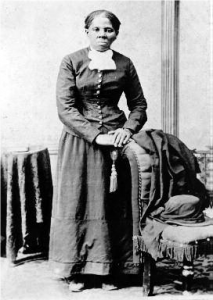
Between 1918 and 1929, the number of cars in New Jersey rose by more than…
a) 250,000
b) 450,000
c) 650,000
Harriet Tubman’s base of operations for the Underground Railroad was…
a) Glassboro
b) Camden
c) Cape May
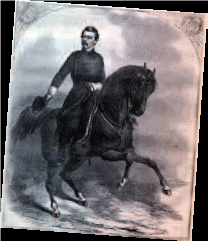
George McClellan, general in chief of the Union Army, was from…
a) Westwood
b) West Orange
c) West New York
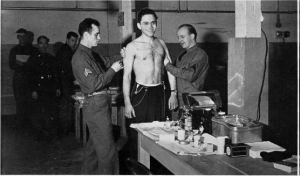
Camp Dix (aka Ft. Dix) was built to train troops for…
a) The Spanish-American War
b) World War I
c) World War II
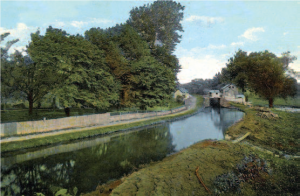
The waterway that brought coal from Pennsylvania to New Jersey factories in the 1800s was…
a) The Morris Canal
b) The Erie Canal
c) The Raritan Canal
The number of New Jerseyans who served in the military during World War II was just over…
a) 300,000
b) 400,000
c) 500,000
The postwar builder who turned Willingboro from a town of 600 to a suburb of 40,000 was…
a) William Carteret
b) William Levitt
c) William Hovnanian
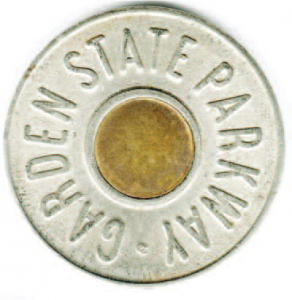
The Garden State Parkway opened…
a) in 1949
b) in 1954
c) in 1959
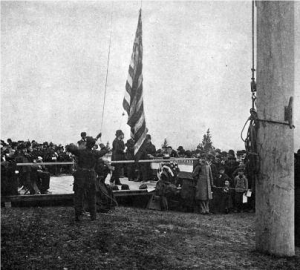
The governor who initiated the first state income tax, specifically to support New Jersey’s schools, was…
a) Frank Hague
b) Brendan Byrne
c) Jim Florio
The state’s famous business slogan is…
a) Business is ripe in the Garden State
b) Your future is just an exit away
c) New Jersey makes, the world takes
The two parts of the legislative branch in New Jersey are…
a) the Senate and General Assembly
b) the Governor and Congress
c) the Judicial and Fiscal
The Pledge of Allegiance was given as the national oath in 1893 for the first time at…
a) The Newark Train Station
b) The Twin Lights on the Navesink Highlands
c) The steps of the Trenton Courthouse
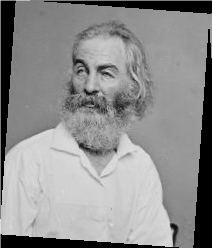
Poet Walt Whitman lived out his final years in…
a) Saddle River
b) Weehawken
c) Camden

The New Jersey Performing Arts Center in Newark opened in…
a) 1997
b) 1999
c) 2001 A passing grade is 13. Brave enough to check your work? You’ll find the answers in the box at right…

Images courtesy of Upper Case Editorial Services
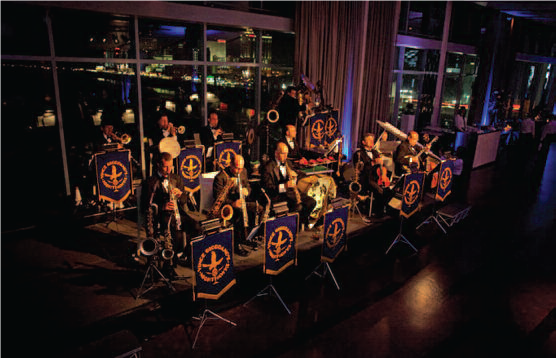
Vince Giordano’s Nighthawks perform in Atlantic City
Bix Biederbecke once said the thing he liked about jazz was that he didn’t know what was going to happen next. The legendary 1920s bandleader could just as well have been describing HBO’s Boardwalk Empire. It is loud and loose and right on the edge of crazy. Vince Giordano and his band, the Nighthawks, supply the music that drives the hit series. They can be seen performing in the lavish party scenes, and heard throughout each episode. Authenticity is the hallmark of the show, and Giordano is as authentic as they come. The Nighthawks work off the original band arrangements from that era— Giordano just happens to own the world’s largest collection. In 2012, he won a Grammy for the Boardwalk Empire compilation soudtrack…and suddenly, everyone is talking about (and downloading) the joyous music of the Roaring ’Twenties. EDGE Editor Mark Stewart—also a devotee of early jazz—spoke with Giordano after his weekly gig at Sofia’s Restaurant on West 46th St. in New York.
EDGE: At what point did you get the call for Boardwalk Empire?
VG: Right from the get-go. The same music team I worked with on The Aviator with Vincent Scorcese was asked to put together the music for Boardwalk Empire. They knew I had two houses bulging with 60,000 scores. We had such a fun time on the movie I said, “Let’s do some more!”
EDGE: With the added bonus that the show is filmed in Brooklyn.
VG: It’s really convenient. The set we work on is actually the recreation room of an African-American church in Bedford-Stuyvesant. The Boardwalk Empire team went in and rewired and repainted it, basically got it up to code, so when the show is done they’ll have a nice recreation hall. Some other scenes were shot in a mansion built in 1804 that’s part of the Brooklyn Navy Yard.
EDGE: How much acting direction do you and the Nighthawks get?
VG: When Scorcese supervised the pilot, he had a lot more direction for us. I even got some speaking lines. In subsequent episodes we’re more in the background. Our job is to mime the music we’ve recorded in the studio. So we have to look like we’re having a good time and make sure were in synch. We have these little devices called earwigs, which are wireless speakers we put in one ear. So when they want to knock out the music so they can capture the dialogue, we’ll still have it playing in our ears. You don’t want to be strumming or fingering and be really off—it looks bad.

© Zoetrope Studios
EDGE: People are always trying to spot that in movies, aren’t they? Hey! He’s not really playing!
VG: Oh, yeah. In the old days there was some real bad sidelining—that’s what we call it—where they put Joe Blow up there with a bass or a trombone or a saxophone and it was really apparent he had no idea what he was doing. You watch those scenes and say, “Oh my God, they couldn’t find some out-of-work musician to do this?”
EDGE: What was the first movie you and the Nighthawks were in?
VG: In 1984, a small version of the band was in The Cotton Club. Richard Gere portrayed a trumpeter named Dixie Dwyer in the movie. He had actually played a trumpet in his high-school days. He tried to get his lip back, which is pretty hard. The trumpet is a very demanding instrument. But he pulled it off. He did a pretty good job recreating those big Louie Armstrong solos. Richard was a very nice fellow, too. Very interested in our music, and very open to any suggestions we could give him.
EDGE: Do you have an opportunity to get to know the actors on a series like Boardwalk Empire? I ask because I know that Michael Pitt is a musician. By the way he’s definitely been bumped off, right?
VG: Oh, yeah. He’s gone. A lot of people were upset that they killed off Jimmy. I say just don’t kill off the band! No, but generally we don’t get a chance to hang out much. We’re so far away from the main actors on that set, and with time clicking away and so many people involved there’s just not the opportunity. Movies can be different. When we did The Aviator, Leonardo di Caprio came over and mentioned to me that he was very surprised that this music had so much spirit and fun to it. He said, “This is really exciting music!” Being a younger person, he was like a lot of people who’d never been exposed to this vintage music. It was a revelation.
EDGE: When you won the award for Best Soundtrack it was not on the Grammy television show. How did you find out?
VG: It was on the Grammy internet channel. The news came sometime the afternoon before the Sunday evening broadcast. I was playing a jazz party up in Connecticut and I got a text that said: WE WON. So you can imagine, we were running around screaming. People thought we were a little nuts. I’m happy we won. I’m even happier that the music will now get a little more attention.
EDGE: You shared that soundtrack with other musicians who’ve devoted themselves to the music of the 1920s and 1930s. Performers like Leon Redbone. What’s the feeling in that larger group? Does the Grammy give you all some validation?
VG: Definitely. All this work we’ve put in for all these years with doubting Thomases saying, “What are you doing with this old music? Get with the times!” We hung in there and it did something good for all of us.
EDGE: The Nighthawks formed in the 1970s. It’s quite something to keep a musical group together for 30-plus years. What was the band’s first break?

© Elektra/Asylum
VG: In the early 1980s we were bouncing around different night spots in New York City. We were playing at this club on the West Side called Sweetwater’s. An interesting fellow came in with thick glasses and a goatee. He asked for my card after the show. It was Ahmet Ertugun from Atlantic Records. Ahmet was extremely connected. He called Peter Sharp, the owner of the Caryle Hotel, and said, “You gotta get these guys in your room.” We worked there Sundays and Mondays. Those were Bobby Short’s dark nights. We did two seasons there. He and his wife also got us a lot of charity balls and private parties. We were working like crazy—the guys were actually complaining!
EDGE: You also played with Woody Allen.
VG: Yes, I was fortunate to work with Dick Hyman as a side man on about a dozen Woody Allen films. Dick called me up and said, “You really love playing this music. Sometimes I get musicians who are really talented, but who don’t have the spirit for this older music.”
EDGE: You’ve had this spirit all your life.
VG: Since I was five years old. The impact of this music really came from winding up my grandparents’ old Victrola and listening to their 78 collection. I have it in my home now—it’s my Rosebud, so to speak. Anyway, as a teenager I tried listening to rock ’n roll, but it just never sat well with me. The other kids were listening to the Beatles, of course. Coming home after school and turning on the TV you’d see those old comedies—The Little Rascals, Laurel and Hardy, the Warner Brothers cartoons—and they used a lot of that peppy music from the 1920s, with synchopated brass and whining saxaphone. So people would say, “There goes Vince with that ‘cartoon music!’” They just couldn’t understand what I was doing. It was tough as a teenager.
EDGE: Let’s talk about your vintage music arrangements. Is that the right term?
VG: Or stock orchestrations. These are band charts—not just the old piano sheet music you see in antiques stores. So if you were a bandleader back in the 1920s you would buy this packet of music and hand it out to all the fellows in your band. If you didn’t have your own arranger, these stock orchestrations were enough to get your band up and running. There were thousands of bands all over the world doing the exact same arrangements.
EDGE: Is it fair to say the “value” of these scores is that you don’t have to listen to the 78s and deconstruct the different parts?
VG: That’s quite true. For us to play this music exactly how we hear it on the recordings, it takes away a lot of the guesswork. Also, sometimes I’ll hear a great recording and pull out the arrangement, and see that someone in the band or one of the arrangers did something really special.
EDGE: How did you begin amassing your collection?
VG: I was a member of the musician’s union and put an ad in this publication that went out to the whole country, VISIT US ON THE WEB www.edgemagonline.com asking if anyone had these arrangements from the ’20s and ’30s. A lot of bandleaders who were getting up there in age—or their widows—offered to box them up and send them to me if I paid the postage or gave them a few bucks. This started in the mid-’70s. Then I went even further and began contacting the families of old musicians who had passed away. I would hand-write letters to their relatives explaining who I was and what I was trying to do. Many people called me and said, “Wow, we were going to throw this out—come over and take it.”
EDGE: And now you’re up to 60,000. Where do you keep them all?
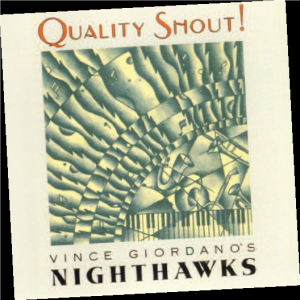
© Stomp Off Records
VG: I own twin houses in Brookyn. I moved there in 1979. The people across the driveway we shared passed away and I put a bid in for the house and got it. Once I got the second house my collection expanded. I am like the goldfish you put in a bigger pond who gets bigger.
EDGE: What’s the end game? Where does the collection ultimately reside, say, 50 years from now? What’s the ideal scenario?
VG: I plan to donate these to a foundation that is being set up by Michael Feinstein.
EDGE: I would think that a college or university would love to get its hands on these vintage arrangements.
VG: Our institutes of higher learning don’t seem to see this as valuable music. The jazz music they’re teaching kids is more modern—it starts with Thelonious Monk and John Coltrane. I’m all for that but, unfortunately, it almost seems as if one style of music is being erased by another.
Editor’s Note: Vince Giordano’s Nighthawks play every Monday and Tuesday night right on the other side of the tunnel at Sofia’s. To keep track of Vince log onto vincegiordano.com. To read about how Vince began his musical career, log onto edgemagonline.com for exclusive content.
The film version of Grease—loved by some and ignored by others—has achieved classic status.

Photo credit: Paramount Pictures
Timing is everything. In the late spring and early summer of 1978, not a whole lot was competing for the attention of young people in this part of the country. Certainly, it was nothing like the summer of 1977. Lest we forget, one year earlier Son of Sam was running amok, the metropolitan area was plunged into darkness during the blackout, Reggie Jackson was the talk of the town and everyone was seeing Star Wars for, like, the fifth time. Into the media and entertainment lull of June 1978 burst the muchanticipated film version of the Broadway hit Grease. Everyone went to see it, and everyone walked out with an opinion. To those who’d seen it on the Great White Way during the 1970s—and so many of us did—something seemed a little lost in the Hollywood glitz and glamour. The fact that Danny, Sandy, the T-Birds and the Pink Ladies had been transported to the sunny suburbs of Southern California took off a bit of the edge that made the live show so much fun. On the other hand, to those who had only seen Grease performed by their high school drama club or had purchased the zillion-selling album or 8-track, the film was utterly fantastic. Looking back, what almost everyone can agree on is that, in defining the 1950s for a 1970s audience, Grease the movie defined in many ways who we were at the end of the 1970s. It was a confusing, dispiriting time of gas shortages, post-Vietnam-post-Watergate cynicism, serial divorce and unbridled narcissism. Everyone needed something uncomplicated to transport them to a time and place that clearly never existed, but was just real enough to provide a cherished escape. This was both the greatest strength of Grease, as well as its most glaring weakness. Perhaps the lyrics of Frankie Valli’s title tune said it best by saying nothing in particular: Grease is the word. It’s got groove it’s got meaning. Grease is the time, is the place, is the motion. Grease is the way we are feeling. To be sure, there was nothing particularly profound about Grease. And yet, all these years later, the movie has become a classic…and as such is deserving of a closer look.
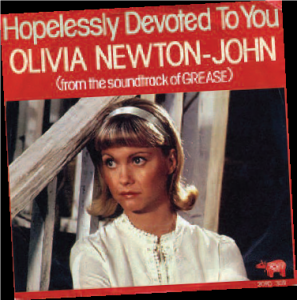
Photo credit: RSO/Polydor
THE CAST With Hollywood musicals on the downtrend, producers Robert Stigwood and Alan Carr set out to assemble a cast that would appeal to virtually every member of the human race. John Travolta (Danny) was the reigning Hollywood heartthrob, not to mention the unofficial king of disco. Olivia Newton-John (Sandy) was the goldenthroated Australian beauty who pumped out pop hit after pop hit during the 1970s. She had a readymade international audience and also pulled an older demographic into the multiplexes. Stockard Channing (Rizzo) reminded audiences of Grease’s Broadway roots. Never mind that she and Newton-John needed spatulas full of makeup to look Travolta’s age. Jeff Conaway (Kenickie) provided another tie to Broadway, where he won raves playing Danny. Conaway offered the added advantage of being one of the stars of the critically hailed television series Taxi, which went on the air in 1978. The supporting players were also hand-picked to please. Didi Conn (Frenchy) was coming off a starring role in You Light Up My Life, where she charmed audiences as an overachieving underdog. Eve Arden (Principal McGee), Frankie Avalon (Teen Angel), Sid Caesar (Coach Calhoun), and Alice Ghostley (Mrs. Murdock) were among the many veteran actors whose names and faces were as familiar as breathing. Even Sha Na Na, the revival band largely responsible for bringing back the ’50s during the ’70s, got into the act.
THE CRITICS To devotees of the Broadway musical, Grease the movie was a pale, predictable comparison. Critical reviews were somewhat mixed, but mostly positive. It received just one Oscar nod, that for Original Song — “Hopelessly Devoted to You.” Those who liked Grease agreed that it succeeded as a sweet, fun fantasy of American teen life in the 1950s. It grossed just under $9 million the weekend it opened in June 1978, and over the years returned many times its $6 million production cost at the box office. To date the movie has grossed over $150 million in the U.S.
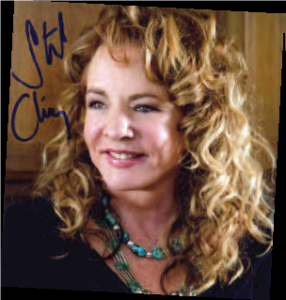
Photo credit: Upper Case Editorial Services
THE SONG Grease the movie reprised most of the key songs in the Broadway original, while adding three significant others, “Hopelessly Devoted to You”, “You’re the One That I Want” and the disco-inspired title track by Frankie Valli. Olivia Newton-John’s recording of “Hopelessly Devoted” soared to #3 on the Billboard charts in 1978. “You’re the One That I Want”—a duet with Travolta—topped the U.S. and British pop charts. “Grease” was written by Barry Gibb of Bee Gees fame, and was a hit on both the pop and R&B charts. “Hopelessly Devoted” was nominated for an Oscar but lost to Donna Summer’s “Last Dance”. It was also up for a Grammy but lost the Best Female Pop Vocal nod to Anne Murray’s “You Needed Me”. Newton-John had won the same award four years earlier for “I Honestly Love You”. She sang “Hopelessly Devoted” at both the Oscars and Grammys in 1979, and her performance at the Grammys brought down the house. “Hopelessly Devoted” and “You’re the One That I Want” were written by John Farrar. Farrar first worked with Newton-John when she appeared on Australian TV in the late 1960s on the American Bandstand-inspired The Go!! Show, where he was a member of the house band, The Strangers. They reunited a couple of years later at London’s Abbey Road Studios, where he worked as a studio musician on Newton-John’s string of hits in the 1970s. He wrote for and/or produced several albums for her, including Let Me Be There, If You Love Me Let Me Know and Have You Never Been Mellow. Farrar was one of several songwriters asked to submit new material for the film version of Grease, which needed more musical numbers to work on the big screen. In the 1980s, Farrar produced Newton-John’s double-platinum Physical album. In 1994, the British pop siren Sonia took over the role of Sandy in a West End production of Grease. Her version of “Hopelessly Devoted to You” turned on a whole new generation to the song, thanks in part to an edgy music video shot against an urban backdrop.
WHERE ARE THEY NOW?
John Travolta • Danny Zuko After Grease the law of gravity seized hold of Travolta. He began picking flops over blockbusters, famously turning down An Officer and a Gentleman and American Gigolo. He packed on a couple of pounds but kept his soft-spoken charm and good looks, which helped a resurgence that began with his Oscar-nominated role in Pulp Fiction. Since then he’s turned in memorable performances as good guys (Phenomenon), bad guys (The Taking of Pelham 1-2-3), and even a stage mom (Hairspray).
Olivia Newton-John • Sandy Olsson The sexy turn in Grease did little to impact Newton-John’s music or film careers. However, her timing couldn’t have been better a few years later when she released “Let’s Get Physical” at the beginning of the fitness boom and music video craze. In 1992, a comeback tour was derailed when Newton-John was diagnosed with breast cancer. She recovered and became an advocate for breast cancer research, adding this to a long list of humanitarian causes she has supported.
Stockard Channing • Betty Rizzo Channing’s fortunes skyrocketed after Grease —not bad considering she was in her mid-30s when she played Rizzo. Her acting résumé encompasses stage, screen and television, with countless nominations and awards, and a notable turn as First Lady Abbey Bartlet on The West Wing. J
eff Conaway • Kenickie On Taxi, Conaway played a handsome actor who could never quite catch the big break. The role was painfully close to the truth. By the end of the show’s first season he was overshadowed by the other members of the ensemble cast, including Danny DeVito, Judd Hirsch, Tony Danza, Christopher Lloyd, Andy Kaufman and Marilu Henner. Conaway spent the next two decades taking sporadic guest starring roles, before landing a regular part on Babylon 5. He gained some notoriety in 2008 when he was featured in the reality series Celebrity Rehab. In 2011, Conaway died at age 60 of pneumonia.
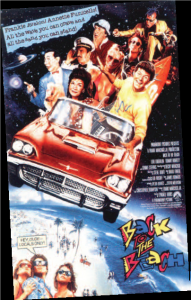
Photo credit: Paramount Pictures
Didi Conn • Frenchy Conn reprised her role in the unfortunate 1982 Grease II sequel, and then went on to starring roles in the TV series Benson and Shining Time Station. The mother of an autistic son, Conn became a celebrity spokesperson for Autism Speaks.
Frankie Avalon • Teen Angel Avalon appeared in a handful of films and television shows after Grease, playing himself (or some version of himself). His iconic status—and timeless good looks—helped him launch a cosmetics and skincare line. In 1987, Avalon appeared with his old buddy Annette Funicello in the movie Back to the Beach. In 2007 he crooned “Beauty School Dropout” for the finalists on the reality show Grease: You’re the One That I Want. And in 2009, at the age of 70, Avalon performed on American Idol.
Sid Caesar • Coach Calhoun Caesar stayed active in movies and television through the 1990s and beyond. In 1983, he hosted Saturday Night Live. He received a standing ovation and was made an honorary cast member in recognition of his contributions to live TV. Three years later, Caesar performed with the Metropolitan Opera. He turns 90 this September.
Eve Arden • Principal McGee Arden was a television, film, theater and radio giant long before she set foot on the Grease soundstage. Her final silver screen appearance came in Grease II. Arden passed away in 1990.
Annette Charles • Cha-Cha DiGregorio After Grease, Charles earned a handful of bit parts in television and movie productions. Although she stayed close to Hollywood, she didn’t quit her day job: speech professor at Cal State Northridge. Charles passed away from cancer in 2011 at 63.
Eddie Deezen • Eugene Felsnic Deezen’s performance as geeky Eugene established a blueprint for every film nerd that followed. Ironically, he was not cast in Revenge of the Nerds a few years later— although he is still asked about that movie on a daily basis. Deezen remains one of the busiest voiceover actors in the business. S
ha Na Na • Johnny Casino & the Gamblers Yes, they are still touring. And original members Donny York, Jocko Marcellino and Screamin’ Scott Simon are still with the band. Sha Na Na was at the height of its fame when Grease was filmed, with its own TV variety show that ran into the early 1980s. The popular front man Jon “Bowzer” Bowman went solo in the 1980s and still performs today around the country. For many years there was an urban legend that Bowzer attended Juilliard. It was actually true.
EDGE Editor’s Note: Mark Stewart attended the critics screening of Grease in 1978. He liked the new songs but didn’t think much of the movie—despite a family connection to the Travoltas.
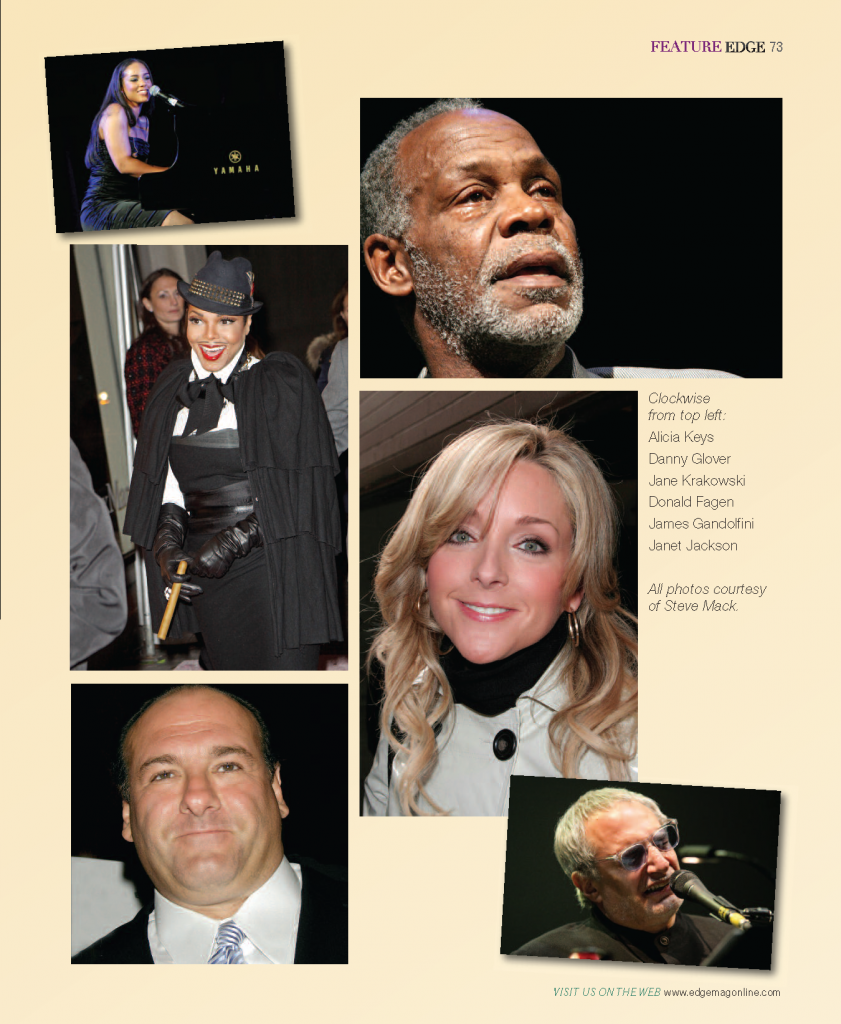

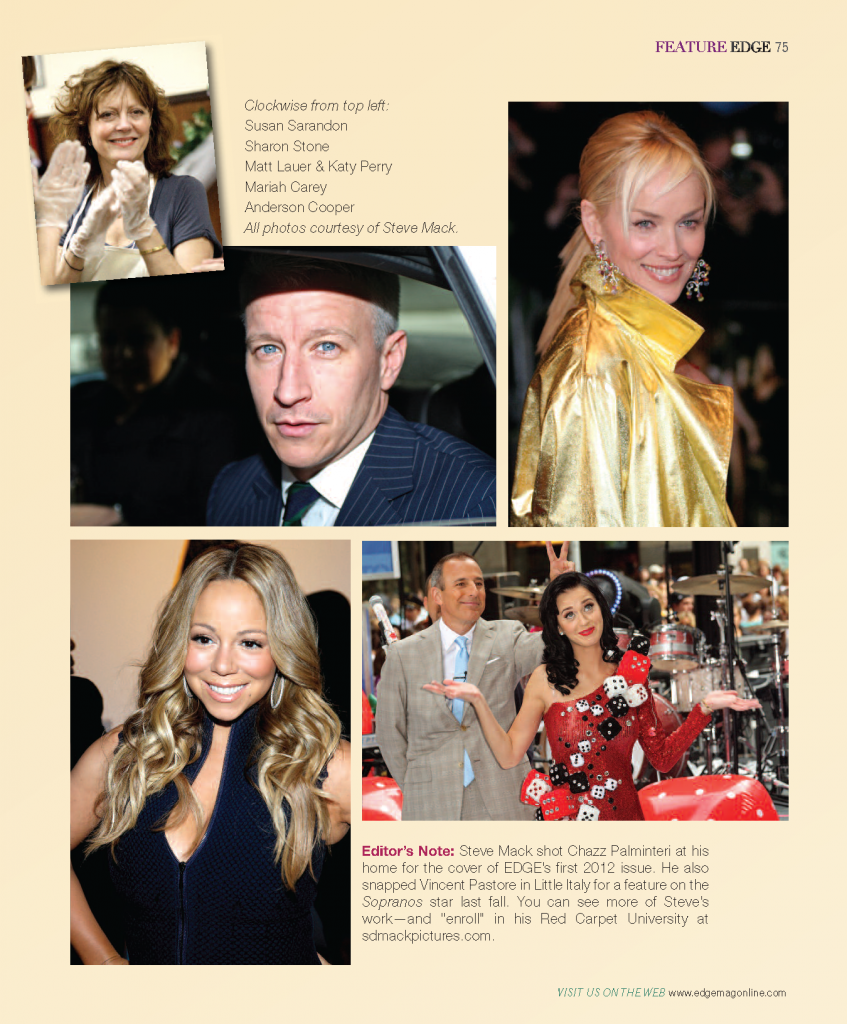
Genius loves company. That may be the simplest way to account for one of 2012’s most ambitious and successful album releases, Let It Be—a reinterpretation of Beatles classics by Roberta Flack. For someone whose musicianship covers every genre from Classical to R&B to Jazz, however, nothing is simple about the 12 songs that made the final cut. Each one is like taking hold of Flack’s hand and finding a new walkway through lyrics and melodies that are as familiar to most of us as breathing. As Tetiana Anderson discovered, for the fourtime Grammy winner it’s all about the journey. Indeed, from Flack’s early years as a music prodigy through the twists and turns of a fascinating and celebrated career, she has become quite adept at discovering the path less taken. And, the title of her new album notwithstanding, Roberta Flack has never been one to simply let it be.
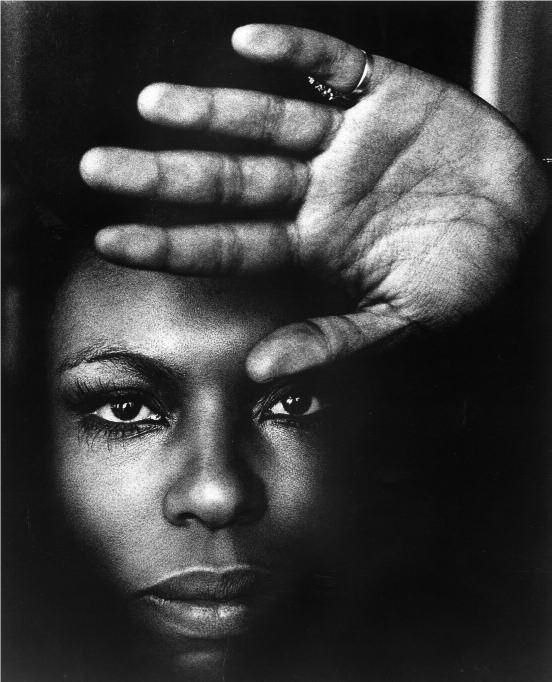
Photo courtesy of Roberta Flack
EDGE: You really want people to make connections through your songs. Where did that come from?
RF: I don’t know where that came from. But I can tell you that connecting through songs is what I am all about, period. I was watching recently some footage of Bill Cosby introducing me at a jazz fest back in the ’70s. He was telling the audience that Roberta Flack tells stories so you can understand them. I think that is a true description of how I feel about music. It speaks to me. I try to speak back and once I get the conversation going—and figure out what the whole point is—I’m ready to dig in and come up with a very individual interpretation of a particular song.
EDGE: Your own story is incredible. You were the youngest person to ever enroll at Howard University, and later the first black teacher at an all-white school. Do you think of yourself as someone who breaks barriers?
RF: No. But I do believe in destiny and fate. If you are practicing five or six hours every day—and that’s all you live for as a child because there are no other options—if you are able to grasp that and hold onto it, it will tell you where you are supposed to go. I did go to Howard early. And I did become the first black teacher at an all-white school in Chevy Chase, Maryland, which was a little tighter wound in terms of the people and their personalities than Virginia. When you’re a child and you have the gift of music, the gift of art, the gift of conversation, nothing stops you.
EDGE: What impact did the church and gospel have on your appreciation for music?
RF: I belonged to an interesting church and my mom was the church organist. The choir director was a Howard University graduate, and many of the choir members were people who had graduated Howard or gone to school with him. That church, as we would say as young kids, was “uppity.” It was uppity because the church that Mahalia Jackson, Sam Cooke, the Soul Stirrers and the Five Blind Boys visited was not our church. That was Macedonia Baptist, down the street. I spent a lot of time as a young person going between churches. Actually, the first genre of music I was exposed to was not gospel music; my background was actually classical. But I loved gospel. What is there not to love? It doesn’t have to be something where people are shouting. It can be a song’s subtle embellishment, it can be the malisma that Whitney Houston brought to her pop music. Melisma is a gospel characteristic when you take a note that’s supposed to be da and go dahahahahahaha and add all those other notes up and down the scale. That is a beautiful experience and it’s also very moving. Your soul cannot help but be stirred when you hear Aretha Franklin sing “God Bless the Child” or “Amazing Grace.”
EDGE: Do the classical works of Chopin and Bach give you the same goose bumps as gospel?
RF: Yes. Yes. I can play some Chopin for you that would make you say Girl, that ain’t Chopin! I’ll tell you who uses the melodic flow of romantic composers like Schuman, Brahms, Chopin, Shubert and Beethoven: Stevie Wonder. When you hear him sing, when you hear him play any of those songs that are so melodic, like [singing] A Ribbon in the Sky for our love…he does a lot of that.
EDGE: You worked on songs with Stevie Wonder but are perhaps best known for your partnerships with Donny Hathaway and Eugene McDaniels. What did you learn about the craft from those two?
RF: I was humbled by their talent. I’ve been watching a performance Gene and I did in the studio of a song that Gene wrote for an Eastern Airlines commercial. It was called “Chasing the Sunshine.” How clever is that as a title? This is the same guy who wrote “Reverend Lee,” “Feel Like Making Love” and “Compared to You.” He was a profound writer, Gene McDaniels. Absolutely, absolutely brilliant. Donny and I cut “You’ve Got a Friend” in 20 minutes, which isn’t hard to understand. I am a musician, not just a singer, so you don’t have to teach me something. I have the presence of mind and the ambition and the appreciation for my craft to sit down and practice. So I practiced, came to New York, and Donny and I did “You’ve Got a Friend,” which went to the top of the charts. So they said Let’s do an album. Okay, so the next thing we did was “Where Is the Love.” Donny and I finished that first album in three days! I should say that I did whatever Donny asked me to do as a duet partner. In terms of putting it together, sketching it out, bringing all the pieces together so that everybody understood what was happening—that was Donny, that was the kind of mind he had. Three days.
EDGE: You accompanied Donny on piano on the classic “For All We Know.”
RF: Yes. When we finished that album the producer asked, “Ro, you got another song?” I said, “Donny do you know this song?” He said, “Yeah I know the song but I don’t know the words.” So I wrote down the lyrics of “For All We Know.” I played it and he sang it and we recorded it. You know, I had really cut my chops as an accompanist. I’d played piano while I was teaching school in DC at the Tivoli Opera Restaurant. I mean we were doing Aida and Madame Butterfuly, we were doing Tosca and La Traviata and Verde and Chelini. Oh, it was just so wonderful. Here I am this little girl from Black Mountain, North Carolina. I’d never read that stuff but my musicianship, my gift—thank you, God—allowed me to do it with the same kind of comfort that I’m playing for Donny. I just looked at him and listened to the way the song was developing. When we did that together it was one of the highlights of my recording career.
EDGE: You also worked with Bob Marley. How did you meet? What was he like?
RF: Beautiful. Fine. Sexy. He was a friend. We were both Aquarians. I am on the 10th and he’s on the 6th. When he got sick I was so upset. I lived for seven years in Jamaica accidentally. That was part of that Eastern Airlines – Gene McDaniels thing. Part of my payoff from the airline was to close my eyes, pick from their map any place, and my finger landed on Montego Bay. I stayed for about two days and said, Now I want to go to Kingston. I was with a couple of guys. We went to Kingston and ran right smack into some Rastas who said, “Sistren let me take you, let we go see brother Bob.” So he and I became friends and as a matter of fact I brought down later my band and we went into his studio and worked on “Killing Me Softly.” Then I came back to the States and recorded it, and of course that was a hit for me, too. But Bob was a wonderful friend. He spent several hours in my apartment in New York sharing musical ideas and good vibrations and was just a beautiful person. When he was sick I tried to find some holistic doctors for him to see. I was able to introduce him to a few, but it was a little bit past the time where they could help.
EDGE: You’ve seen more than one great talent leave this earth before their time, whether its Bob Marley or Whitney Houston. That’s got to be tough for you.
RF: It is tough. I think about it especially since Whitney died. I think about it a lot. A couple of days ago I found myself rattling off names of people that I have known and worked with, or knew musically in a very special, intimate way, who are gone. I said, Okay I gotta stop this. You start to feel your own vulnerability.
EDGE: You mentioned “Killing Me Softly,” which went to number one. What do you recall about that?
RF: When “Killing Me Softly” was released as a single I was performing in Germany. My one source of Englishlanguage entertainment was the army base radio station. I had it on and woke up to Well, here it is again, Roberta Flack’s next big single, Killing Me Softly! I remember thinking Oh, boy! But at the end they finished by repeating “…killing me softly with his song” over and over and then fading out. I said “No, that’s not it!” I called the producer and asked, “What did you do?” He said, “Oh I just faded it.” I said, “No! No! No!” He said, “Man, only like a million three hundred fifty thousand of these have been sent out all around the world. Can’t you live with that?” I said, “No.” So they changed it.
EDGE: Let’s fast-forward to your new album. One of the interesting things about the Beatles is that they evolved so rapidly and had such a huge effect on popular music. When you went back and sorted through their catalogue of songs what are the things that made you go Wow?

Atlantic Recording Co./David Redfern
RF: When I was looking at “I’m Looking Through You,” which is the first song we laid down, there is the line Love has a nasty habit of disappearing overnight. Disappearing overnight. Every time I sing that it makes me almost want to cry, because love does have a nasty habit of vamoosing overnight. You can be ever so intense and sincere and real, then all of the sudden it’s like Who is this person? What am I into? I’m married to who? What and why did I do this? Because the love you thought you identified as love was something else, and wasn’t based on something that could stand all the pressures of being, of becoming, Roberta Flack. I was married to a wonderful bass player who worked with Roland Kirk, the great jazz horn player. Roland thought I was a great musician and he’d say, “Ro, come on, you need to play some jazz girl. Come on.” My husband said to me one day, “You can’t do this, because if you do, you’ll change.” I asked him, “How will I change?” He said, “I don’t know, but women always change.”I told him I wasn’t going to change, that I’d been playing the piano and singing and helping other people play and sing all my life—so this is just another format, another audience. I’m doing it. I want to do it. He said, “If you do, we can’t stay together.” I said, “Okay. Bye. See you later.”
EDGE: You chose your music.
RF: Of course! How could I not? I had no choice. I wasn’t selling my body. I wasn’t prostituting. I wasn’t doing anything except making music, which I had been doing all my life!
EDGE: So back to the Beatles, is what grips you their lyrics?
RF: No, it’s everything.
EDGE: How did you decide which songs to include and which to cut?
RF: It wasn’t easy. I listened to myself and I listened to my heart mostly. I think if you’re a trained musician like I am, or like Alicia Keyes or Stevie Wonder or Donny Hathaway, it helps. You have the ability to see how a song is built from the bottom up. And after you see the song and you fall in love with the song, then you get inside of it and break it down again. It’s an incredible process.
EDGE: Still, the process took five years.
RF: Yes, well the longer I worked on the songs the simpler they became, and the easier it became for me to hear them in their finality. Even though I hadn’t finished them, I could still hear what was going to be the final song. I could hear my voice singing the lyrics and singing the melody and putting it all together, and the accompaniment underneath. I wanted mostly guitars, because I think of the Beatles as guitarists. There were three major players in their band—John, George and Paul—so I wanted it to have that sound.
EDGE: Do you think songwriting and popular music has changed dramatically since the Beatles were around?
RF: It has to. Can you imaging doing the Hand Jive? Can you imagine doing the Charleston? Can you imagine every song sounding like something Billie Holliday had to sing? Weren’t we glad when Esther Phillips came out and sang “What a Difference a Day Makes?” The world must evolve and everything must change, especially music. If it doesn’t, where do we go? I can’t imagine doing all of the Beatles songs the way they did them.
EDGE: I have to ask—you crossed paths fairly often with John Lennon when both of you had apartments in the same building on Central Park West. Were you buddies?
RF: He invited me to the studio, and I did work with him a couple of times on stage and stuff like that, but it was never like buddy-buddy. It wasn’t buddies, no.
EDGE: So what’s next for Roberta Flack?
RF: I really wish I knew what was next. I have an album of songs I’ve done with a group of young people. We all call ourselves the Real Artist Symposium—symposium meaning a group of very musical people. We’ve come up with an album we want to release under the title: Real Artist Symposium featuring Roberta Flack. Not because I want to be featured, but because using my being a member of the group will attract interest and people won’t have to look at something and say What’s RAS? Maybe they’ll be curious enough to check out the music of these other young artists who are with me. I’ve done some of the music already and I am excited about it.
Editor’s Note: If Tetiana Anderson’s name is familiar, it’s probably because her face and voice are, too. A television reporter who has chased storms for the Weather Channel and covered Operation Iraqi Freedom from Baghdad for MSNBC, Anderson is currently a freelance reporter/ producer for organizations including NY-1, CBS Newspath and CNN. Needless to say, she knows her way around an interview.
The only people crazier than celebrity-obsessed fans are the dog-obsessed fans of celebrities. They drive countless web sites and have created a new breed of photographer: The Pup-arazzi. We kid you not. EDGE invites you on a walkie with some of the world’s most celebrated dog owners…and unleashes its picks for history’s greatest canine celebrities.
Five Fascinating Celebrity Dog Owners
Jessica Alba
Breed: Pug
Names: Sid and Nancy
Fun Fact: Owns a third dog named Bowie
Peter Dinklage
Breed: Undetermined
Name: Kevin
Fun Fact: Point Pleasant native gave a shout out to his dog-sitter during Golden Globes acceptance speech…but forgot to thank his manager
Angelina Jolie
Breed: Bulldog
Name: Jacques
Fun Fact: Resisted overwhelming temptation to get a Pitt Bull
Barack Obama
Breed: Portuguese Water Dog
Name: Bo
Fun Fact: Malia’s allergies dictated a hypoallergenic breed
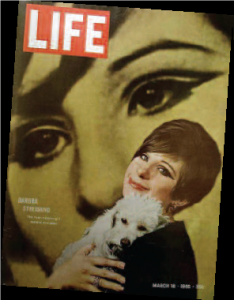
Photos: Timmy & Lassie autograph courtesy of Upper Case Editorial Services; Barbra Streisand copyright 1966 Time Inc.
Barbra Streisand
Breed: Coton de Tuléar
Name: Sammie
Fun Fact: Streisand and her dog Sadie graced the cover of LIFE in 1966
Honorable Mention
Ellen Barkin
Breed: Who cares? Could there possibly be a better celebrity dog-owner name!
Burning Question What about Bob Barker?
Top 5 Celebrity Dogs
Toto
Breed: Cairn Terrier
Claim to Fame: Appeared in The Wizard of Oz and 11 more films
Did You Know? Made more per week than the highest paid Munchkin
Rin Tin Tin
Breed: German Shepherd
Claim to Fame: Made 25 movies and had his own radio show
Did You Know? Rinty scored a star on Hollywood’s Walk of Fame
Balto
Breed: Siberian Husky
Claim to Fame: Annual Iditarod traces the path of the 1925 journey that saved Nome from a diphtheria outbreak
Did You Know? Has a statue in NY’s Central Park, near East 69th street
Lassie
Breed: Collie
Claim to Fame: Lassie TV series ran for 20 seasons
Did You Know? First dog to play Lassie was named Pal
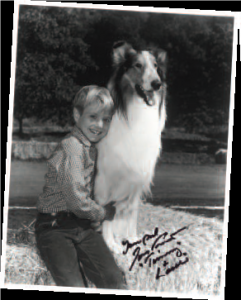
Photos: Timmy & Lassie autograph courtesy of Upper Case Editorial Services; Barbra Streisand copyright 1966 Time Inc.
Eddie
Breed: Jack Russell Terrier
Claim to Fame: Offended Frasier Crane in every imaginable way
Did You Know? During the show’s 11-year run, Eddie was played by Moose and his son, Enzo
Jim Dratfield will do anything to get his shot.
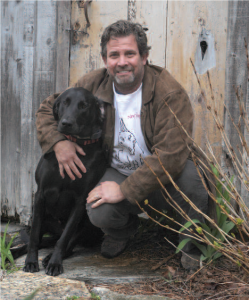
Jim Dratfield and Sawyer
Jim Dratfield has been known to sing an aria to an Italian Greyhound, rub shoulders with a cheetah and transform a bathroom sink into a photofriendly backdrop for a finicky house cat. “I’ll do whatever it takes to get an animal to respond,” says Dratfield from his farmhouse in upstate New York. “I don’t expect animals to be models.” Improvisation comes easily to this former actor who has been called the Dr. Doolittle of animal photographers. His theatrical career hit a prophetic note in 1980, when he was cast as an aspiring photographer in a Broadway revival of The Man Who Came to Dinner. Born and raised in a pet friendly household in Princeton, Dratfield spent his childhood performing and mingling with aspiring filmmakers, many of whom were protégés of his dad, Leo, a legendary film distributor. Anxious to advance his acting career, young Dratfield landed a recurring role as a paramedic on TV’s St. Elsewhere, but reality set in as he approached his thirties. “The life of an actor is a funny thing,” Dratfield says. “It’s one thing to struggle as an actor in your twenties, but when you’re in your early thirties, it becomes more of a concern. I was fortunate to have done a Broadway show and some television work, but there’s something called waiting tables—I ended up doing a lot of that.”
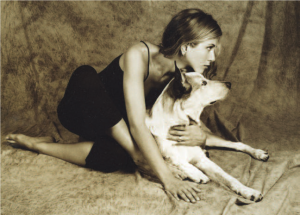
Jennifer Aniston and friend
The turning point came when he shot some promotional photos with his dog, Kuma, opening the door to a lucrative new career. “A light bulb went off,” he says. “I’d always loved animals and photography and began wondering if there was a market for fine art pet photography. I thought it might be a way to help support my acting habit.” Dratfield exhibited some of his photos in the restaurant where he waited tables and caught the eye of a literary agent. “She liked the pictures on the walls and was a dog lover, so we started talking,” Dratfield recalls. The Quotable Canine, a coffee table book pairing dog portraits by Dratfield and Paul Coughlin with classic quotes, was published by Doubleday shortly thereafter. In 1993, Dratfield’s passion for animals and photography coalesced into Petography, Inc. He grew the business via private client commissions, more best-selling books, a prestigious gallery exhibit and evergreen posters, calendars and greeting cards.
It didn’t take long before he became the go-to guy for pet lovers in the entertainment industry, politics and sports world. “I think it launched me because it was such a specific niche and so different from what was out there at the time,” he says. “What do you get the person who has everything and is a pet lover? A photo session!” Dratfield’s private clients and book projects keep him hopping across continents, from the elegantly manicured enclaves of Beverly Hills to the volcanic terrain of Iceland and the wetlands of Yeehaw Junction, Florida. A client flew him down to Yeehaw Junction, aka Jackass Junction, to photograph a prized hunting dog. “It was like something out of Deliverance,” he recalls. “The ranch manager, Peanut Pitt, couldn’t meet me because he was taking his daughter deer hunting for her 14th birthday; so his wife, Spanky, met me at the gate. I called my wife and said, ‘If I don’t come back alive…’” Although he’s suffered his share of bites, scratches and knock-downs from his four-or-more-legged subjects, Dratfield finds pet owners to be challenging as well. “There was the therapist who was French kissing her dog in bed and wanted pictures of that,” he says. And a pair of renowned folk art collectors suggested posing their dogs drinking out of a toy toilet. “The craziest shoot I ever did was for a woman who had two cheetahs,” recalls Dratfield. “I went into this gated area with her and the cheetahs, and was a little nervous. One rubbed up against me, but I got the images.
Three weeks later, the woman was mauled by those cheetahs. I’m lucky I survived. I got them on a good day.” Dratfield’s celebrity gigs have taken him to Henry Kissinger’s backyard, where the shirtless statesman fussed and cooed over his black Lab while his wife, Nancy, and mother stood by. And there were jaunts to London to photograph British Labour Party Leader Baron Roy Hattersley’s Bull Terrier and to Jupiter, Florida, to shoot the St. Louis Cardinals with their dogs during spring training. While the furry companions of such mega-celebrities as Jennifer Aniston, Elton John, Kathy Bates, Charlize Theron, Jack Hanna and Oscar de la Renta can be found on Dratfield’s résumé, he is equally proud of his painstaking work on The Quotable Equine. For this exquisite book, published by Clarkson Potter in 2003, he insisted on travelling across Europe and Asia to photograph horses in their distinctive habitats. “With horses, it’s hard to get their personality the way you can with a dog or a cat,” observes Dratfield. “I thought the only way I was going to succeed was to take a cultural element and incorporate that into the imagery.” Whether he’s zooming in on a quizzical pug or a doleful dachshund, an ant farm, turtle or elephant, Dratfield believes that one constant fuels all of his photo shoots: the profound bond between pets and their owners. “You get unconditional love from pets that you don’t get anywhere else,” he says. “If a person is normally uncomfortable in front of a camera, when they’re holding their pet, they’re less self-conscious and more apt to give you something spontaneous because they’re expressing their love.” “I’ve done shoots for the biggest CEO; but when he’s out of the board room and around his little kitten, he’s making kitty noises and talking gibberish. People let down their guard with me. I ultimately see their best sides because they love their pets.”
Dratfield has no regrets about giving up acting for Petography, Inc. because he’s continually reminded that his life’s work makes a difference. “I get calls when a client’s animal passes away. They’ll say, ‘Your pictures meant a lot to me at the time, but now they’ll immortalize my pet in a way that I didn’t even realize.’ That makes me feel good because I’m not doing brain surgery, but I know I’m doing something that gives people contentment.” 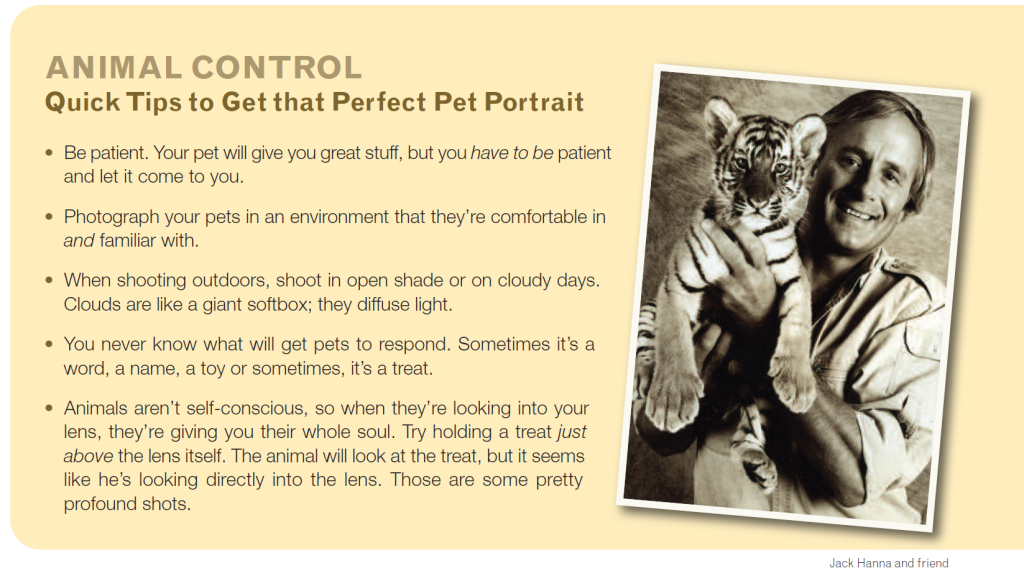
Editor’s Note: You can see more of Jim’s photos by logging on to petography.com. Judith Trojan has written and edited more than 1,000 film and television reviews and celebrity profiles for books, magazines and newsletters. Her interviews have run the gamut from best-selling authors Mary Higgins Clark, Ann Rule and Frank McCourt to cultural touchstones Ken Burns, Carroll O’Connor, Judy Collins and Caroll Spinney (aka Big Bird). Make sure to check out Judith’s FrontRowCenter blog at judithtrojan.com.
Anyone who questions whether acting is a craft needs to spend a little time with the cast of a play like Stick Fly, which opened to rave reviews this past winter at the Cort Theatre on 48th Street. Produced by Alicia Keys and directed by Kenny Leon, Lydia Diamond’s engaging family drama explores themes of race and class through the story of an upper-class African-American family. While this may be unfamiliar territory for most Broadway theatergoers, the two male leads of Stick Fly are instantly recognizable. Mekhi Phifer (ER) and Dulé Hill (The West Wing and Psych) rank among the most beloved and talented ensemble television actors of our time. Hill is an old hand where Broadway is concerned, while for Phifer Stick Fly marks his debut. EDGE Assignments Editor Zack Burgess met with the co-stars before a performance at the Cort over the holidays. Three-way Q&A’s can be tricky—especially with so much ground to cover—but as usual, Zack just pointed his subjects in the right direction and they took it from there.
EDGE: Did either of you have a professional relationship with Alicia Keys prior to this production of Stick Fly? Dulé Hill: No. But I have always been a fan of hers. Who’s not a fan of hers? Mekhi Phifer: I knew her, but of course not to the level of our friendship since this project got started.
DH: I had done a version of Stick Fly about five years ago in L.A. It was a staged reading with mikes. It kind of reminded me of old-school radio. It was fun. I hadn’t thought about it since then, and then I got a call back in the summertime to do a project. I knew they had an offer out to Mekhi, which really piqued my interest. Once I was told the name of the play, I said I’m in. Alicia’s involvement was the icing on the cake.
EDGE: You both have done lots of television and film work so you have a good background in terms of shared experience. The exception is probably that Dulé has spent time on the Broadway stage. Mekhi, how has Dulé helped you adjust to performing on stage?
MP: Dulé has done Broadway four times. I’ve never done a play, so I’ve asked him a lot of questions. It’s always helpful to be surrounded by people who are veterans and who are good at what they do—who know what is entailed in making this thing work. Being able to go to Dulé was very helpful for me to get acclimated to this environment.
DH: Remember that the other pieces have mostly been musicals. This is only the second produced play that I have done. So it’s still kind of a new world for me. I’m not going to be putting on any tap shoes or singing.
EDGE: Dulé, what did you see as Mekhi’s immediate strengths in terms of stagework when you guys started rehearsals back in the fall?
DH: It comes down to being a brilliant actor. He brings it every time. That’s the case whether he’s on ER playing Dr. Pratt or the star of Paid In Full, coming on Psych or playing Flip in Stick Fly. That alone is it. Having those skills. There are things you have to do when you’re dealing with the stage versus film and television, and Mekhi took everything in, learned and adapted. He asked questions and processed information very quickly. You wouldn’t know that this is the first play he’s ever done. I really respect him for that.
EDGE: Dulé, are there any parallels between the LeVay Family in Stick Fly and your own experience growing up in New Jersey?
DH: I grew up in a middle-class family, although I don’t think we had anywhere near the type of money of the LeVays. But I definitely relate to the LeVays’ dysfunction. I have a great family, but we have our level of dysfunction, too. There are things we don’t talk about. We don’t always address issues when we should and they end up simmering underneath and then exposing themselves in other areas.
EDGE: What about similarities to your character, Spoon?
DH: Spoon is trying to figure out where he wants to go in life. And that is foreign to me because I started doing theatre at the age of ten, and started tap-dancing when I was three. I’ve always been on a journey of self-discovery and owning who I am as Dulé—not trying to fit into the mold of what other people think I should be. Spoon doesn’t own his vision. He starts to figure it out during the play, but in a way his family never supported him or gave him the opportunity to really find out what he wanted to do. I’m very thankful that my parents supported me, exposed me to new experiences and let me find where I want to go in life.
EDGE: Is that what Stick Fly is about?
DH: It’s about family dysfunction, self-identity…and daddy issues.
EDGE: Daddy issues in what respect?
DH: The idea that, when you’re a child, your father is perfect. For instance, I love my dad to death, but growing up there’s this issue of trying to fit into the mold of who you think you should be because of your father. Then one day you realize that your father is a man just like you. He has his own faults and Achilles’ Heel.
MP: My character, Flip, emulates his father. He’s a doctor, like his dad. He’s just living life. He’s off the cuff. Flip has what is seemingly a closer relationship with his father than the one Spoon has. But I think what makes Dulé’s character stronger than mine in certain respects is that Flip took the more accepted route by becoming a doctor.
EDGE: What was your family background like, Mekhi?
MP: I grew up in a single-parent home and never met my Dad. At the same time, my mother was a schoolteacher, a dancer and a choreographer. She always stressed academics, but she was also about the arts. There was never one way to do something. She favored an obtuse way of thinking versus an acute way of thinking. So my mom wanted me to have great grades and she looked over my homework. But she was always supportive of the arts. So when I was a kid and I would do little talent shows, or rap in freestyle and battles, she was always very supportive.
EDGE: What nuggets of wisdom have you guys picked up from your co-stars over the years?
DH: We’ve worked with phenomal co-stars.
MP: I agree, we’ve both been blessed to work with some dynamite co-stars.
DH: On The West Wing, Martin Sheen used to say to me, “It’s got to cost you something. If it doesn’t cost you something, then it’s meaningless.” Whether it’s the journey of the character or you as an individual, you really have to put yourself into it. Something—time, energy, whatever— has to be sacrificed if you’re going to have a successful career. For example, if I’m hanging out all night partying and then try to come on stage the next day, it’s just not going to work. You have to make choices and say, “This is where I want to go. This is what I want to do.” That always stuck with me. What also struck me about Martin was his humanity, how personal and gracious he was with everybody. I try to take that part of him and apply it to my own life.
MP: The first piece of advice that really stuck with me came while I was doing my second film, Tuskegee Airmen. Laurence Fishburne told me then that “less is more”— especially when you’re dealing with film and television. Another piece of advice I got was from Bill Cosby. He said somebody had asked him what was the key to success, and he said he didn’t know, but he did know the key to being unsuccessful, and that’s trying to please everybody. Those two poignant statements have stuck with me throughout my career.
EDGE: From Martin Sheen and Laurence Fishburne we move on to Jon Lovitz…Mekhi, what do you take away from a crazy comedy like High School High?
MP: Jon Lovitz was wonderful. We were all young in that movie and I always remember him being so nice. He was extremely successful at that point, just coming off of doing SNL. That was early in my career and it was a little bit of a whirlwind for me. But Jon’s one of those guys that will stop you on the street and talk to you, and after awhile you’ll be like, All right Jon, enough is enough. Enough jokes. I’ve got to go. So like Dulé said about Martin, yeah be successful, but be gracious as well. Live life and get to know more people.
EDGE: Dulé, you got to know Wesley Snipes working together on Sugar Hill. What insights did he give you as an actor?
DH: There was one thing that Wesley told me that stuck with me. I had just gotten to L.A. and it was right before I got The West Wing. I was auditioning for stuff and I wasn’t getting the roles, the scripts weren’t very good, and I was going to get dropped by my agent. I ran into Wesley one day and he said, “If there’s always one way, there’s always another.” I asked him what he meant by that and he explained that if you see a bunch of people going up a hill and falling back and not making it through, then try to look on the other side. There’s not just one way to get to your destination. I don’t know what he meant for me to receive from that, but it always stuck with me. From then on I’ve always looked for different angles on how I approach a character, and my career.
EDGE: I am curious how the involvement of a major musical personality changes the culture of a movie or a TV show or a stage production. For instance, Mekhi, when you worked with Eminem on 8 Mile, was that a very different experience than the other films you’ve done?
MP: It was great. Pure fun. I’m 26, 27, we’re in Detroit, Eminem is at the apex of his career. We had a month of rehearsals so that Eminem could get dialed in. We partied hard and it was fun. It was a great experience working with a director like Curtis Hanson and all these actors who were relatively unknown at the time. We had a blast. What I loved about Curtis was that he trusted us. Even when we were doing the battles—that stuff was not scripted. And the people in Detroit were great. What made those battle scenes real is that those people were real people. They were not day-to-day extras, they were real people from the neighborhood.
EDGE: Every successful actor has that role that he almost got, but it went to someone else. So tell me, each of you, what was the “one that got away”?
DH: That’s a tricky question, because if it got away then it was never really mine. There are roles throughout my career that I wanted, but I’m very happy for the actors who got them. One was Savion Glover’s role in Tap, because I’m a tap dancer. To work with Gregory Hines, Steve Condos, Harold Nichols, Jimmy Slyde and Sammy Davis, it really hurt when I didn’t get it. I just wanted to be in that space with those great actors. A lot of those guys started passing on right after that. Antwone Fisher was another role I really wanted. I would love to have shared the screen with Denzel Washington for that amount of time. Derek Luke got the role and Derek’s a good friend of mine. It really exploded his career. I was happy for the actors who got those parts, but I would be lying if I said I hadn’t wanted those roles.
MP: Right after I did Clockers with Spike Lee, I auditioned for Dead Presidents. I was right down to the wire for the role of Anthony and they decided to go with Larenz Tate, which was fine because Larenz is a friend of mine. They were shooting in New York, it took place in the Bronx, and the Hughes brothers were just riding high off Menace II Society. I remember meeting with the casting director, who thought they were going to give me the part. But I guess the Hughes brothers already had a relationship with Larenz—who had stolen the show in Menace II Society. I guess they figured We’ll ride with him.
EDGE: Have you ever walked out of an audition thinking you’d messed it up?
DH: Going back to Antwone Fisher, I got a chance to read with Denzel. Now normally after I read a script, I don’t usually get caught up in the things that are in parentheses— words like ANGRY or UPSET. I leave that alone and go with my own journey. For some reason in that particular situation, I saw the word ANGRY sticking out. So when I’m in the room and it’s me with Denzel, that word kept popping into my head. So I’m reading and I’m being angry. The first thing Denzel said to me was, “Why you so angry?”
EDGE: But your career survived.
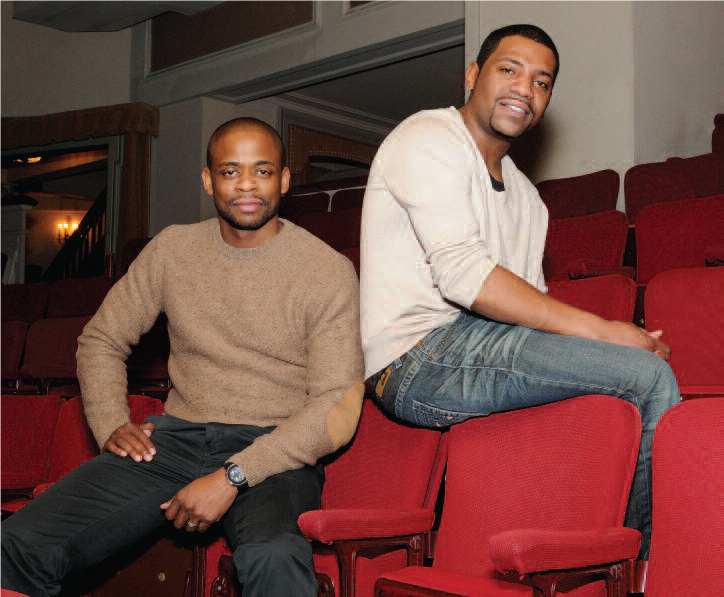
Photo courtesy of Nadine Raphael
DH: It did. So to all the people out there, I say just because you mess up on one thing doesn’t mean it’s the end of the world.
EDGE: Back to Stick Fly—Dulé, how does this cast compare to some of the others you’ve worked with?
DH: One of the perks of being in this business is just the camaraderie that exists with the people we work with. That’s what makes a show like Psych successful. These people are really good at what they do. And they also happen to be really nice people—people that you want to hang with and have drinks with later. Look at Stick Fly. When you work with actors like Ruben Santiago-Hudson, Tracie Thoms, Rosie Benton—they challenge you just to step up to another level. Ruben is a bona fide professional veteran, Tony Award winner and dynamic actor. You can’t half-step it with Ruben. It’s not going to happen. They’re all phenomenal actors. Then you get blessed to be in a situation where you’re seeing someone like Condola Rashad—someone who is already great, but her career is just getting started. I’m really honored to be on the stage with her. She’s knocking it out of the park now, but in ten, fifteen years I truly believe I will be saying that I was a part of her journey to greatness.
EDGE: What does your director, Kenny Leon, bring to the show, and how might someone in the audience at Stick Fly experience that?
MP: Kenny brings a realism to it. I’ve been to many Broadway shows and the worst thing in the world is to sit there and you’re bored out of your mind. You start fidgeting, you start falling asleep. Kenny not only stresses pace, but telling a story and being good at what you do as an actor. A good analogy would be a dog race. We, the actors, are the rabbit. The audience is the dog. We want them to come up to our speed, and I think we succeed. Doing a play is a totally different machine when it comes to directing. I love Kenny’s direction.
DH: I have to say that most of the directors I have had a chance to work with have been brilliant. But there are things about Kenny that remind me of George Wolf, the director of Bring in ‘da Noise, Bring in ‘da Funk. They are both very specific about every little detail. Everything we’re doing on stage in Stick Fly is meant to draw the audience’s attention to where Kenny wants it to be. That’s cool, because sometimes as an actor you forget those things.
Editor’s Note: Zack Burgess writes about politics, sports and culture for a variety of publications and web sites. You can read his work at zackburgess.com.
As a performer and storyteller, Chazz Palminteri holds a special place in American popular culture. Coming of age in the Bronx during the 1950s, he was surrounded by the neighborhood characters and themes that would one day populate A Bronx Tale, the beloved one-man show and film that catapulted him to stardom. Palminteri’s creative journey has been marked by artistic, critical and financial successes—both as an actor and writer (and, yes, even as a restaurateur). Yet as EDGE’s Assignments Editor Tracey Smith discovered, as far as Palminteri has come, his comfort zone is still that stoop at 187th and Belmont. All these years later, for an observer of the human condition, it’s still the best seat in the house.
EDGE: The apocryphal story about A Bronx Tale is that you turned down a million dollars for the movie rights because you wanted to write the screenplay and play Sonny yourself. True?
CP: Yes, it is absolutely true that I turned down a million dollars. I wrote Bronx Tale: A One Man Show to showcase myself and show people that I could play eighteen different characters. I wanted to play Sonny. I wanted to write the screenplay. It’s about my life and I didn’t want anybody from Hollywood taking it and doctoring it up, sanitizing it or whitewashing it. I wanted it to be real, you know, and truthful. They felt they couldn’t make a movie without a star. I wanted people to see what I could do. So I just said no.
EDGE: That’s commitment.
CP: Everybody in Hollywood went crazy. The first offer was $250,000, the next offer was $500,000. I just said no. Don’t forget now Tracey, I was running out of money. I was down to my last $200. Actually $187.00 to be exact. I kept saying no and then they said $1,000,000—and I said no again.
EDGE: Enter Robert DeNiro.
CP: Yes, a week later Robert DeNiro walked into the theater and saw it, loved it and came backstage. He told me how much he thought it was great and how great I was, and said, “Look, you’d be great as Sonny. And you should write the screenplay, because it’s about your life. You should be Sonny and it’ll be real and I’ll make it real. You make it with me, I’ll make it come to life, I’ll play Lorenzo, your father, and I’ll direct it and we can be partners. I give you my word.” I shook his hand, and the rest, as they say, is history.
EDGE: You and DeNiro became good friends.
CP: Bob is a really good friend. We’ve been friends for 25 years. We’ve done several films together, and been involved in many projects. He’s the best. He wants everything right, you know, and he doesn’t care how long it takes. He’s a perfectionist, as am I. That’s why we get along so well. We have great chemistry.
EDGE: How would you rate him as a director?
CP: I’ve always said that the reason why A Bronx Tale turned out so good is because I had a great director who wanted to make it “life.” A bad director can spoil a great script, and a good director can make a bad script into a movie. But a great director can make a really good script fly, and that’s what Bob did. I wrote a really good script. Really good. And Robert DeNiro made it fly. He made it real.
EDGE: Which parts of the story were autobiographical?
CP: I would say a good 80 to 85 percent of the movie is autobiographical. It really stems from when I was nine years old sitting on the stoop and I saw this man kill another man right in front of me. Just like they did in the movie, exactly the same. My father came down and grabbed me upstairs, and then the cops came. The reality is I never went down and did a lineup. I just said I didn’t see anything, and that was it. Also befriending the wiseguys when I was a kid, throwing the dice for them, going to get things for them—that’s all true. Also my dad was a bus driver. He worked right off of 187th street. My mother used to be out the window all the time. I fell in love in with a black girl at the age of 17. Some of the guys I knew died in a racial attack with some black youths. The majority is true. But I had to blend it all in the same timeframe.
EDGE: There are a lot of complex themes in A Bronx Tale. What affects people most deeply? What aspect of the story do they identify with the most?
CP: I wanted to talk about the working man and what my dad instilled in me. Yet as good as my father was, he had some qualities that he had to change. And regardless of how much of a bad guy Sonny was, people loved him. They were sad when he died. Taking the best of Sonny and the best of my father and becoming this man who I am today—that’s what resonates most with everybody. Also, I think because it’s not about black and white or good versus evil, people just love the story. They identify with the different characters.
EDGE: Out of curiosity, how does one play 18 characters in a one-man show?
CP: A lot of practice and a lot of rehearsals. But God has given me the gift and somehow I’ve mastered it.
EDGE: What prompted you to write the one-man show?
CP: Desperation. It was desperation. I was doing a lot of small roles and couldn’t break into the higher echelon. I thought, if you won’t give me a great part, I’ll write one myself and show you how good I am. I’ll make my own story, and make you listen to me.
EDGE: Your next role after A Bronx Tale was Cheech in Bullets Over Broadway. You played a mob heavy with a genius for writing dialogue…and were nominated for an Academy Award. Was that character in the original script, or did it evolve after you got the part?

Photo credit: Joan Marcus
CP: Woody Allen always tells people, “When I found Chazz Palminteri, he was born to play the part.” It was written that way. When I first read it I was like “Holy smokes, this is amazing!” I couldn’t get over it.
EDGE: After these two films, how did life change for Chazz Palminteri?
CP: Oh God! More money! Much more money! And more opportunities, oh yeah! I exploded out of the box!
EDGE: Of the 50-plus films you’ve done since then, which ones should I go back and watch again to see you in a really interesting performance?
CP: Okay, let’s see, Hurlyburly is one. A Guide to Recognize Your Saints is one definitely. And I would say Mighty Fine, the one I just did with Andie McDowell, is a great one. Mulholland Falls is another one.
EDGE: You have a recurring role as Shorty on the hit series Modern Family.
CP: Modern Family is a great show, I love the people. They write me in as often as they can and I return. They’re like family, I truly enjoy working with the cast. I play Jay’s longtime best friend. It is just hilarious, a great show.
EDGE: Okay now to the serious stuff. The Yankees. What happened in the playoffs?
CP: Well, you know, they just didn’t win. It’s that simple. We won 97 games during the regular season. I never liked five games as a playoff format. I think everything should be seven games. That’s how you can tell who the best team is.
EDGE: You are playing Babe Ruth in the new movie Henry & Me. How great was that?
CP: That was great. Anything to do with the Yankees is not bad. I have always loved sports. My father used to take me to the games at Yankee Stadium. I loved Mickey Mantle back in those days and collected his baseball cards. I love the Giants, the Rangers.
EDGE: I read that John Franco was one of the producers of Henry & Me. Were you okay working for a Met?
CP: That didn’t bother me. I’m not rooting for his baseball team, but that didn’t bother me at all. John Franco is a very nice guy.
EDGE: So when is the long-awaited Chazz Palminteri autobiography coming out?
CP: I write screenplays and I write plays, but not a book yet. It’s just not time. I get my point of view out in my movies or my plays. My new four-character play, Human, should be out in 2012. I’m very excited about that. Maybe when I have more time and I’m older, I’ll sit down and write a book about my life.
EDGE: You are performing A Bronx Tale at the Mirage in Las Vegas this March. This past summer, you had a nice run in Atlantic City. Having performed this play in various places, have you noticed any regional differences in the way you relate to the audience—or the way they relate to you?
CP: I thought I was going to see that. But it’s the same thing everywhere. No difference from region to region. I can’t explain it. What I find flattering and a little strange, though, is how certain lines from A Bronx Tale have seeped into the dialogue and culture.
EDGE: How so?
CP: Once, I got on a plane, and as soon as the door closed, the pilot said, “Well, ladies and gentlemen, now you’se can’t leave.”
EDGE: Sonny’s line from the scene where the wiseguys lock the door at the bar and work over the bikers!
CP: Right. I laughed. I was like, Wow!
We Americans are a competitive breed. We go for the gold and shoot for the stars. Perhaps that’s why more than 50 million of us drop everything to tune into the Oscars, Emmys, Tonys & Golden Globes…and countless millions more follow the pre- and post-show activities on our TVs, iPads, laptops and smart phones. It certainly explains why New Jerseyans are particularly proud when “one of our own” takes the stage to grab a piece of that coveted hardware. Here’s a look at some Garden Staters who have taken Acting Out to award-winning extremes…
 The Envelope Please…
The Envelope Please…
Michael Douglas (b. 1944, New Brunswick) • Received his first Oscar in 1975 as Best Picture producer (One Flew Over the Cuckoo’s Nest). • Accepted the 1987 Best Actor Oscar as Gordon Gekko in Wall Street. • Won 3 Golden Globes (including one as producer of Romancing the Stone).
Linda Hunt (b. 1945 Morristown) • Won the 1983 Oscar for Best Supporting Actress for playing Billy Kwan in The Year of Living Dangerously, becoming the first person to win for portraying someone of the opposite sex.
Jack Nicholson (b. 1937 Neptune) • One of only three actors to win three Oscars (two for Best Actor in One Flew Over the Cuckoo’s Nest and As Good as It Gets and one for Best Supporting Actor in 1983 for Terms of Endearment). • Record holder for most nominations (8 for Best Actor and 4 for Best Supporting Actor).
Joe Pesci (b. 1943 Newark) • Won 1991 Best Supporting Oscar for Good Fellas. • Nominated 10 years earlier for Raging Bull.
Eva Marie Saint (b. 1924 Newark) • Won Best Supporting Oscar for On the Waterfront. • Received a Golden Globe nomination for her performance in A Hatful of Rain. • Won an Emmy for the mini-series People Like Us in 1990.
Frank Sinatra (b. 1915 Hoboken) • Won the 1954 Best Supporting Oscar as Maggio in From Here to Eternity and was nominated for Best Actor two years later as The Man with the Golden Arm. • A trio of Oscars for Best Original Song, and Golden Globe Best Actor wins for Pal Joey and Come Blow Your Horn. • Hosted the Academy Awards broadcast in 1963. • Awarded the Presidential Medal of Freedom by President Reagan in 1985.
Kevin Spacey (b. 1959 South Orange) • Won his first Oscar as Best Supporting Actor in 1996 for The Usual Suspects, and his second as Best Actor in American Beauty in 1999. • Artistic director of London’s Old Vic theatre since 2003.
Meryl Streep (b. 1949 Summit) • Nominated an astonishing 16 times (more than any other actor), winning it twice (for Kramer vs Kramer and Sophie’s Choice). • Received the most Golden Globe nominations (25 total, winning 7). • Earned a pair of Emmys and a Tony nomination, as well as the 2004 American Film Institute’s Lifetime Achievement Award.
John Travolta (b. 1954 Englewood) • Won a Golden Globe Award for Best Actor in Get Shorty. • Nominated for the Best Actor Oscar for Saturday Night Fever and Pulp Fiction.
 No Time Like Primetime…
No Time Like Primetime…
Danny DeVito (b. 1944 Neptune) • Won both the 1980 Golden Globe and 1981 Emmy as Louie De Palma on Taxi. • Earned an Oscar nomination as co-producer of Erin Brockovich in 2001.
Peter Dinklage (b. 1969 Morristown) • Won 2011 Best Supporting Emmy for HBO’s Game of Thrones.
John Forsythe (b. 1918 Penns Grove) • Nominated for Golden Globe six times, winning twice. • Emmy-nominated 4 times.
James Gandolfini (b. 1961 Westwood) • Won three Emmys as Tony in The Sopranos.
Ernie Kovacs (b. 1919 Trenton) • Received his only Emmy posthumously. • Emmy-nominated three times for The Ernie Kovacs Show.
Loretta Swit (b. 1937 Passaic) • Won a pair of Emmys as Hot Lips on M*A*S*H.
Jack Warden (b. 1920 Newark) • Won an Emmy for playing George Halas in Brian’s Song. • Oscar-nominated for Shampoo (1976) and Heaven Can Wait (1979).
 Curtain Call
Curtain Call
Jason Alexander (b. 1959 Newark) • Won a Tony pre-Seinfeld for his appearance in Jerome Robbins Broadway in 1989. • Earned Emmy nominations each year from 1992 to 1998.
Nikki James (b. 1951 Summit) • Won a 2011 Tony as Best Featured Actress in a Musical for The Book of Mormon.
Jane Krakowski (b. 1968 Parsippany) • Nominated for a 1990 Tony for Grand Hotel and won in 2003 for her performance in Nine. • Nominated for Emmys 2009–2011 for 30 Rock.
Phyllis Newman (b. 1933 Jersey City) • Edged out Barbra Streisand for the 1961 Tony for her role in Subways are for Sleeping.
Some Very Honorable Mentions These New Jerseyans made huge contributions on stage, screen and television but were overlooked when it came time to pass out the serious hardware…
Bud Abbott (b. Asbury Park 1895)
Lou Costello (b 1906 Paterson)
Jerry Lewis (b. 1926 Newark)
Judith Light (b. 1949 Trenton)
Ozzie Nelson (b. 1906 Jersey City)
Unmentionable • The cast of MTV’s Jersey Shore. • Anyone who watches it.
Vincent Pastore is a hard man to pin down. His interests are many, his gears constantly turning, his attention often divided. Tracey Smith chased him all summer for this interview, hoping to capture the essence of a show business Renaissance Man. To her delight, Pastore turned out to be that Renaissance Man in every conceivable way. Indeed, one can easily imagine him perched upon the throne of a 16th century city-state…or transforming a block of marble into a masterpiece for a wealthy patron…or dodging the business end of an enemy lance at the vanguard of an attacking army. From his tour de force as the conflicted criminal underboss Salvatore “Big Pussy” Bonpinsiero on The Sopranos to his unforgettable stints on reality TV, Pastore has become one of the most cherished characters—and character actors—of our time.
EDGE: The bad guys on The Sopranos could be warm and vulnerable and then suddenly turn and become cold, heartless killers. Your character had the added dimension of being deeply conflicted about being an informant. Did you enjoy that extra challenge?
VP: I did. David Chase wrote that role for an actor who could play a tough guy who also could be sensitive. I saw Big Pussy as a man with a big heart, and that was my choice of how I played that role. In that scene where he is crying in the bathroom at Anthony Jr.’s confirmation, you knew it was not just because he was a rat—he was betraying his friends, which was even harder to deal with.
EDGE: Was Big Pussy the most subtly textured character you have played in your career?
VP: Hmm, that’s a tough question. Probably. Going through so much mental turmoil over such a long period of time, dealing with the tension of if and when he was ever going to get caught by his friends for being an informant. I can tell you that it stayed with me as an actor, over five days a week of taping. It was rather tough.
EDGE: In addition to your acting, you are involved with a lot of plays.
VP: I try to produce three plays a year. It really enables people to see the actors work. I started doing this four years ago. It’s enabled me to continue working with several actors from The Sopranos, including Maureen Van Zandt, Nicholas Giangiulio, Joe Lisi, Garry Pastore, Tony Rossi, Anthony Ribustello and Janet Sarno. I don’t make a lot of money because I own the theater company, but we’ve had a pretty good run.
EDGE: Is that a different kind of stressful?
VP: Yes. The behind-the-scenes aspects of theater can be very stressful. I recently co-produced the revival of Lamp Post Reunion by Hoboken playwright Louis LaRusso. Danny Aiello played the lead character. There were frequent worries about who was ready or on cue. Plus the mood of the main character was dark.
EDGE: Your television and film roles are typically big, rich characters. How much of what we see on screen is you, and how much of that is you slipping into character?
VP: That depends on the role. I am currently being filmed as a mayor in Surviving Family and I’m not acting like the typical wiseguy that I’ve played in the past, like Angelo Ruggiero from Gotti or Big Pussy from The Sopranos. In Surviving Family I am acting, whereas those other characters are closer to who I am. I am Angelo. I am Big Pussy. And trust me, playing a mayor is a whole lot different than playing a wiseguy. There’s no comparison.
EDGE: What about the over-the-top Vincent Pastore we’ve sometimes seen on reality television shows, like Famous Food, The Apprentice and Celebrity Fit Club?
VP: What reality producers try to do is put me up against certain situations to bring out the best or worst in me, which is what the reality television mission is, in all actuality. They place you in a bad improvisation scene with someone you genuinely don’t like, and you’re forced to work with them. They want drama, emotion and conflict. Sometimes my temper shows, but I believe that as long as you don’t take it home to your family, and keep it out of your personal life, it’s okay.
EDGE: You pointed out in a previous issue of this magazine that not everyone can play a wiseguy. By the same token, no two wiseguys are alike. Big Pussy was a fictional character. But the part you played in Gotti was not. What was the challenge in interpreting that role?
VP: Angelo Ruggiero was a real person, so it was key to know the relationship between the two men. John and Angelo had a priceless bond. Armand Assante, who played Gotti, told me that the song The Wind Beneath My Wings reminded him of Ruggiero. He was always right behind John Gotti. He was loyal, and he never ratted. So you have to do the research, know the character. It’s true—not everyone can do this, not everybody can play a wiseguy.
EDGE: You mentioned that Angelo Ruggiero and Big Pussy are “you.” How often do you reach back and draw on your experiences outside the theater, to the real-life characters you’ve known, when you play a part?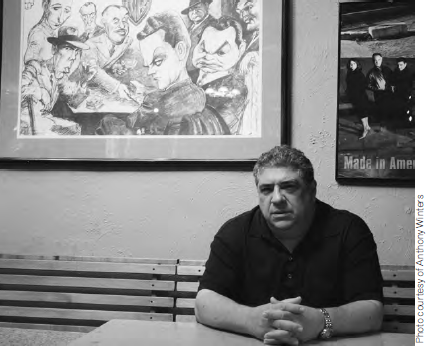
VP: A lot of people think I grew up with those kinds of people. The truth is that I grew up in a pure Italian-American home. Tradition. We lived in New Rochelle in an Italian neighborhood. I can still smell the pizza! Roller skating every Friday night at the Boys Club. Great memories. We saw bookies and loan sharks. But to play these roles you don’t rely on memories. You use your own personality and come up with a great character. And for the record, I never knew any rats.
EDGE: Your family lived above a social club.
VP: The Forester’s Club of America. It’s still there. When I was a kid, I packed the cases of beer, cleaned up after the card games. I still can remember the smell of the stinky ashtrays—which probably had an influence on me later owning a bar. Most days I would get there at 3:00. My dad was a school custodian. He’d get back around 6:00. My mom cooked for the men at the bar on the weekend. There was a big hall in the basement where they would play team games and card games. There was an annual picnic, a Christmas party. A lot of meetings took place here.
EDGE: Sounds like a typical Italian-American social club.
VP: Yes, but not like a John Gotti “social club.”
EDGE: Is it true that you got into acting through Matt and Kevin Dillon?
VP: It was really Kevin Dillon who got me my first break. I used to drive a limo in New York and that’s when I met the brothers for the first time. I told them about my dreams of becoming an actor. They ended up seeing me at this community theater I was doing, and Kevin helped me out. He gave me the direction I needed to finally act. From there, Danny Aiello really became my mentor.
EDGE: One last Sopranos question. Your partner in crime, Pauly Walnuts, went from one line in the first episode to mob superstardom. How did that go down?
VP: The Sopranos was my dear friend Tony Sirico’s last hurrah. He had been in the business for twenty years, had come up through the ranks of indie films, and he had to make an impact. He had to get physically and spiritually more space. In the pilot his one line was Barone wants to talk to you. My part was much bigger. David Chase liked Paulie Walnuts, so he made Tony a technical assistant, and eventually wrote him in more and more.
EDGE: What was it like sharing a scene with a character like Paulie Walnuts?
VP: Like sharing a camera with an elephant! He wanted the whole camera, (laughing) but he let me squeeze in there from time to time. Tony was so experienced. I respect him so much. He always came to work prepared, ready, knew his lines, make-up was perfect. I truly learned from him.
EDGE: Is there a brass-ring role that’s out there for you? Is there a character you were born to play?
VP: I’d love to be on a sitcom. I’d love to finally play someone warm and funny.
Editor’s Note: Tracey Smith is a freelance writer who lives in Chicago. She is working on a book about contemporary films on gangsters and organized crime.
Ken Burns is an old soul with the face of a choirboy and a gift for storytelling. He is especially passionate about American history, and his need to know is contagious. For the past 30 years, Burns has been a fixture on public television. From his early one-hour films profiling such landmarks as the Brooklyn Bridge and Statue of Liberty to his monumental miniseries on the Civil War, World War II, baseball, jazz, our national parks and the American West, he has captivated audiences with the fruits of his meticulous research and his drive to document the history of America through the hearts and minds of those who actually lived it. With as many as six films in production at one time, Burns travels the country filming, researching, lecturing and fundraising—ever mindful of the grassroots appeal of his work. October 2 marks the start of his three-part opus Prohibition, the latest miniseries from Burns and his longtime creative team—including producer director Lynn Novick and screenwriter Geoffrey C. Ward. Award-winning entertainment journalist Judith Trojan caught up with Burns in his New Hampshire production office.
EDGE: Historian Stephen Ambrose once said that more Americans get their history from you than from any other source. Do you set out to educate the public about American history or does it go deeper than that?
KB: I don’t know what would be deeper than educating the American public, but my first impulse is more modest: I just want to tell a good story. Because these are stories in American history, and often stories that have been neglected by the distractions of an all-consuming media culture, I think they then become significant educational tools.
EDGE: Historical dramas like The King’s Speech are extremely popular and win Oscars. Why devote your career to documentaries and not docudramas or dramatic fiction?
KB: I’ve been interested in the power of what’s true—the drama in what was and what is—without any human interference. For me, it’s looking at things that actually happen, and I don’t feel the need to change them.
EDGE: Back in the day, films about American history were dry as toast and earmarked for educational markets. Why do you think your films have wide audience appeal?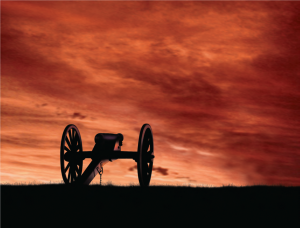
KB: One of the big reasons is I’ve had the great good fortune for 30 years to work in public broadcasting, emphasis on the word public. They don’t interfere with the process; so I enjoy creative control—though we are dependent upon the kindness of philanthropists in corporate, foundation and governmental circles that complete our budgets. Once you’ve removed yourself from the hurly-burly of fashion and really evolve your own authentic style, then people begin to trust that.
EDGE: Your films transformed the genre and became stylistic benchmarks for historical documentaries.
KB: Well, I’m not interested in excavating the dates and facts of the past—the dusty, dry archaeology that has turned so many people off—but in what I’ve called an “emotional archaeology.” The logical world of the head doesn’t allow much room for passion. Yet we also know how dangerous those baser emotions can be that transform history into nostalgia—something I’m absolutely not interested in. The glue that holds together all of the dates and facts in my films is a higher emotional energy. I notice that the things that compel us most in life—the relationships of those closest to us, the work we’re proudest of, our faith, our patriotism— prove that often one plus one equals three. It’s that wonderful contradictory calculus that I think art pursues that I hope to touch on in my films.
EDGE: Are you driven by your own desire to learn about a subject?
KB: Another reason those historical documentaries were so dry is because it was somebody telling you something they already knew rather than, as I hope in my 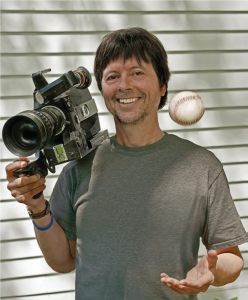 films, a process of discovery. I’m drawn to a subject not because I know about it and want to show off that knowledge or want to tell people what they should know about the subject, but the exact opposite. I want to share my process of discovery. It’s “Hey, let me tell you this unbelievable story I just heard!”
films, a process of discovery. I’m drawn to a subject not because I know about it and want to show off that knowledge or want to tell people what they should know about the subject, but the exact opposite. I want to share my process of discovery. It’s “Hey, let me tell you this unbelievable story I just heard!”
EDGE: April 12th marked the 150th anniversary of the start of the Civil War, and 21 years have passed since you premiered your groundbreaking miniseries. Has your mindset about the war changed in any way?
KB: I made the film because I was convinced the Civil War was the most important event in our nation’s history. There is nothing in the last 21 years that changed my mind. All of American history is in some ways governed by those four horrible years when, in order to become one, we tore ourselves in two. It’s the traumatic event in the childhood of our nation.
EDGE: Seventeen years elapsed between your coverage of the Civil War and World War II—the latter in your powerful 2007 miniseries The War. Why so long an interval?
KB: I vowed after The Civil War that I would not do another film on war. It was just very hard and emotionally painful to do it. But towards the end of the ’90s, I learned two awful facts: one, that we were losing a thousand WWII veterans a day; and two, that many graduating high school seniors thought we fought with the Germans against the Russians in the Second World War. I was appalled. I felt, for the reason that we were losing our soldiers and our historical compass, that I had to dive back into the subject of war.
EDGE: After completing two huge projects examining wartime America, did you come away with any life-altering insights?
KB: War is an interesting and troublesome subject. Americans—indeed, human beings—always forget the painful consequences of a war once it’s over. We begin to drape it with bloodless gallant myth. I think it’s the obligation of the artist to try to remind people of what actually takes place, which is in and of itself paradoxical. You, of course, find horrific aspects of human behavior; but also, you see stunning examples of bravery and courage, friendship and devotion, and loyalty and love that you weren’t expecting. So war has become the place at which a much more intensified study of human nature can occur. I’ve now committed to making a film on the history of Vietnam; and this will consume me, in every sense of that word, for the next six years.
EDGE: Your films consistently shine a light on unsung heroes.
KB: Oh, most definitely. I think one of the reasons American history seems like castor oil to so many people is that it’s usually reduced to a sequence of Presidential administrations punctuated by wars. The more engaging history is when that top-down version is balanced with a bottom-up version. I’ve tried to tell our histories from the bottom-up. What was happening to the individual private— North and South—in the Civil War? And in The War, WWII is reflected essentially through the eyes of people from four American cities: Waterbury, Connecticut; Mobile, Alabama; Sacramento, California; and tiny Luverne, Minnesota.
EDGE: Doris Kearns Goodwin’s quote at the end of The Tenth Inning, your latest series on baseball, beautifully sums up why the game is so enriching for the human spirit. She reminds us that we achieve immortality through our memories of communal activities.
KB: It’s so interesting that, in a way, we achieve our immortality through the stories told by the people that come after us. We keep our parents and grandparents alive that way, and then we too become those parents and grandparents whose lives are kept alive by the stories of their children. These are hugely important things; and they become the essential way in which human beings communicate with one another, whether it’s in documentary films or newspaper articles or on the street corner or over the backyard fence. If you tell history as if it’s over the backyard fence, you’ll have everybody’s ear.
EDGE: You’re now the father of two very young daughters, as well as two adult daughters.
KB: Yes, and I just became a grandfather! So my big girl, my baby, just had a baby.
EDGE: Another girl?
KB: Of course! That’s what we’ve been able to grow in the Burns house.
EDGE: Has having four daughters and now a granddaughter influenced your choice of subjects at all? There’s definitely a link between your latest miniseries, Prohibition, and your 1999 film about woman suffrage, Not for Ourselves Alone.
KB: The professional decisions are completely separate, but one ignores the role of women at one’s peril. I’m sure that’s in some way born from my experience living with lots of women who helped and influenced me.
EDGE: When people think of Temperance and Prohibition, Carry Nation immediately comes to mind; but many other women played pivotal roles.
KB: Yes, it was wives who went to their pastors to complain about their drunken husbands. It was women who fought not only for Emancipation for the slaves and a woman’s right to vote, but for Temperance. The highest-ranked woman in the U.S. government, Assistant Attorney General Mabel Walker Willebrandt, prosecuted Prohibition violators. And women were instrumental as flappers in flaunting the law and thumbing their noses at it. So it’s a wonderful story, which no one ever tells. I hope our film has been able to tell a much deeper story that at its heart engages women. And maybe that is my daughters speaking to me somehow.
EDGE: Prohibition seems to be a story about many people behaving badly. Did you have certain preconceived notions that were upended by the time you completed your research?
KB: It’s less upended than how superficial our knowledge of Prohibition is. We think of gangsters and Model-T’s careening through rain-slicked Chicago streets and tommy guns flashing and flappers and all of that stuff. That’s in our film, and it’s a very exciting and dynamic aspect of Prohibition; but the first hundred years before Prohibition went into effect are as essential to why it happened as anything, and we detail that in our film. This is a film about single issue political campaigns that kind of metastasized with unfortunate, unintended consequences. It’s about the demonization of immigrants. It’s about smear campaigns during Presidential campaigns. It’s about a whole group that felt like they’d lost control of the country and wanted to take it back. And those themes speak directly to what’s going on today without us having to point arrows at it.
EDGE: You grew up in a left-wing family. Has that had any affect on your work?
KB: No. I’ve struggled really hard to speak to everyone: red state, blue state, young, old, black, white, male, female, gay, straight, whatever. I’m interested in speaking to all of my fellow citizens and saying, “These are wonderful stories.” In a country in which civil discourse has decayed, history is still the table around which many of us can agree to come together. And that’s why I’ve been consciously and decidedly apolitical in my films.
EDGE: What about the use of social media today to connect diverse individuals and communities? Do you use it?
KB: I don’t use it. I’m an old fuddy-duddy and work way too hard and really don’t have the time. Everything’s a doubleedged sword. I think when we see how it’s enabled us to bond with people struggling for freedom in North Africa and the Middle East, we see its positive results. When we see how our children are consumed by social media to the extent that they can’t lift their eyes from their computers or their handheld devices to take a walk out in nature, we understand the pernicious effects. So, it’s very important to understand that everything under the sun has both negative and positive aspects. It’s our responsibility to reconcile those differences.
EDGE: If you were to compare yourself to any notable person in American history, who would it be? Have you felt a special kinship with any of your subjects?
KB: I feel a spectacular kinship with Louis Armstrong, Abraham Lincoln and Jackie Robinson; those three people are the bees’ knees for me. Now, would I compare myself to them? Never! I’ve had the great good fortune to spend a lot of time with them in the work that I do; and I feel that I’ve gotten to know them, even though they’re dead and I have not met them. I try my best to channel—if that’s the right word—the best of them to my fellow citizens to remind us of our greatest possibilities rather than our worst. These are the messages of love that Louis Armstrong gave us, of perseverance that Jackie Robinson displayed, and the wisdom and poetry that Abraham Lincoln exhibited. I’m proud to live in a country that had those three individuals as citizens.
Editor’s Note: Judith Trojan has written and edited more than 1,000 film and television reviews and celebrity profiles for books, magazines and newsletters. Her interviews have run the gamut from best-selling authors Mary Higgins Clark, Ann Rule and Frank McCourt to cultural touchstones Carroll O’Connor, Judy Collins and Caroll Spinney (aka Big Bird). Judy most recently helmed the Christopher Awards, a program that for the past 62 years has honored feature films, TV/cable programs, and books for adults and children that “affirm the highest values of the human spirit.”
Internationally acclaimed chef, bestselling author, beloved TV personality, retail superstar— there isn’t much Emeril Lagasse hasn’t done in the culinary world. So it might surprise you to know that among his 12 award-winning restaurants there has never been an Italian one. Until now. This June, Lagasse opens Emeril’s Italian Table at a casino near you—the Sands Casino Resort Bethlehem to be specific, just over an hour away, a straight shot out Rte. 78. It will be his third eatery at the Sands, joining Emeril’s Chop House and Burgers and More (aka BAM). Emeril’s Italian Table features the chef’s creative takes on the rustic Italian cuisine he grew up on, as well as classic meat, fish and vegetarian dishes, wood-oven pizzas and artisanal cheeses. Diners will get to experience the cooking process up close thanks to a large window into the kitchen. EDGE editor Mark Stewart tracked down Lagasse as he put the finishing touches on his latest creation.
EDGE: Everything you do is accompanied with such high expectations now—do you experience more pressure or anxiety when you are creating a restaurant concept, or after the restaurant opens?
EL: Opening a restaurant is tough but I love it. With Emeril’s Italian Table the feeling is definitely excitement. I’ve got a great team that has been part of my organization since the very beginning. We all work hard and put a lot of energy into the planning and the menu, crafting the right look and feel of the restaurant. Our style of service and hospitality originates from my restaurants in New Orleans and is a huge part of our culture and the Emeril’s experience. In the end, we’re in the business of making people happy.
EDGE: What signature touches will veteran diners recognize at your new place in the Sands?
EL: When I opened my first restaurant, Emeril’s, in New Orleans, we really wanted to take down the wall between the kitchen and the dining room. If you visit today, there’s really no barrier between the kitchen and dining room—you can see us at work and we can see who’s dining, and make sure everything is going smoothly out in the front of the house. Emeril’s Table will include an antipasto bar and a food bar so you get that same experience and interaction up close. The food bar is still one of the hottest seats in the house.
EDGE: You opened Emeril’s Chop House at the Sands a couple of years back, and people swear by it. What goes into making a first-rate chop house—from the menu to service to the atmosphere?

EL: This is our only Chop House, so the concept here is a steakhouse with a little twist on the usual standards – chops, steaks, free-range chicken, seasonal fish, lobster and there’s also some Creole-inspired dishes. We wanted to keep a little sensibility of an American steakhouse, except more open and modern. It’s a really inviting and comfortable atmosphere with great food and great service. Each one of my restaurants has its own personality. My belief is that a restaurant must have heart, soul, and always provide a great customer experience. Great food, great wines, and great service—that’s our philosophy regardless of location.
EDGE: In the pantheon of “celebrity chefs” I think of you as approaching things with a rock-star attitude. Does that come from the days when you were considering a career in music? Are you kind of living both lives at the same time?
EL: Well, I grew up doing both and I still love both. Music was and still is another big passion for me. I was in a local band and played the drums in high school. I was even offered a scholarship to music school, but I decided instead to enroll in culinary school at Johnson & Wales University. I have been fortunate enough to overlap the two along the road.
EDGE: When was that moment when you said to yourself Hey, I’m REALLY good at what I do!
EL: I was probably 8 or 9 years old when I realized that I might want to cook and be a chef one day.
EDGE: You are a proponent of eating local produce, and obviously New Jersey has a lot to offer in that respect. What do you feel is the #1 most misunderstood or underrated vegetable?
EL: Kale. I love cooking with fresh greens, lettuces and kale—whether it’s in a soup or sautéed and served with pasta and clams. Our menus generally rotate about three or four times a year. As we transition into summer we’ll make a few menu changes for the season and incorporate the local summer corn and tomatoes and you’ll really see the seasonal influences.
EDGE: This is our Mind Your Manors issue—manors referring to homes. What are some of the mistakes home chefs tend to make when they try to prepare big, bold cuts of meat themselves?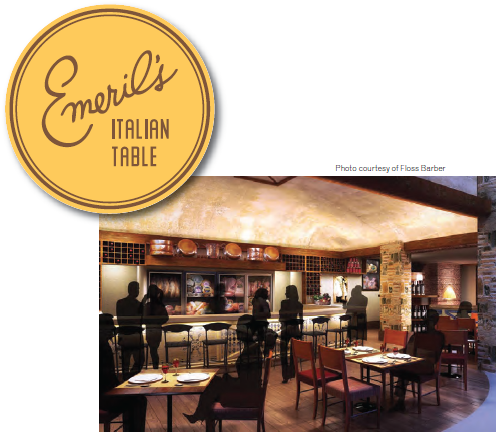
EL: Under-seasoning. Salt and pepper are a cook’s best tool. Sometimes people are afraid to season, but that’s the secret to a great steak—salt, pepper and maybe a little cayenne or essence. Sprinkle a little more salt at the end, and maybe a drizzle of olive oil and a squeeze of fresh lemon.
EDGE: Can you make a truly great steak at home without a commercial kitchen?
EL: A cast-iron skillet, grill pan, or a gas or charcoal outdoor grill are all you need. A lot of people are afraid of under cooking meat, so a good meat thermometer is a smart investment.
EDGE: How has home cooking—from your family background—expressed itself in your creations over the years? How often do you reach back 40 or 50 years for a little inspiration?
EL: Growing up, I was always interested in food from a very young age. My mom Miss Hilda, who is Portuguese and French Canadian, and my dad, Mr. John, were a huge influence on my life. I learned a great deal from my mom. She taught me how to cook and that started my passion for the culinary arts. I also worked at a local Portuguese bakery while in school. I learned the art of making breads, pastries and cakes. Everything I learned early on shows up in some way in my restaurants.
EDGE: What did you learn from baking?
EL: What I learned is one of the most important foundations of my restaurants: make everything from scratch. Bread, pasta, Andouille sausage, Worcestershire sauce, ice creams, sauce—you name it.
EDGE: No shortcuts?
EL: No. There are no shortcuts.
Editor’s Note: BAM! EDGE readers can Cook with Emeril. Go to edgemagonline.com for an Opening Night recipe from Emeril’s Italian Table.
Best-selling novelist Kristin Hannah discusses her new book…and the challenges, choices and rewards of parenting a high school senior.
Timing is everything. Indeed, in her latest foray into the women’s fiction market, New York Times bestselling author Kristin Hannah explores the complex 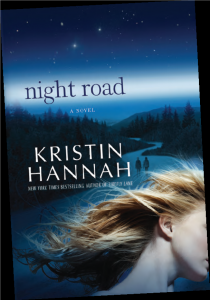 dynamic created when a family with high school- aged twins opens its home to a disadvantaged teenager. Night Road unfolds during a time in the twins’ lives that challenges even the most steadfast parent: senior year. This is the story of the Farradays—mother Jude, father Miles and teens Zach and Mia—and Lexi Ball, a former foster child. When Lexi moves into the Farradays’ small, close-knit community, she quickly becomes Mia’s best friend—and, eventually, the object of Zach’s affections. But the inseparable trio’s world is shattered when a reckless decision tears the Farraday family apart, changes the entire course of Lexi’s life, and grief forever transforms Jude’s ability to be a mother. The book raises profound questions about the resilience of the human heart and the courage it takes to forgive through the haunting story of a family shattered by tragedy, and their struggle to put the pieces back together. Hannah didn’t have to look far for the inspiration she needed to infuse her book with the emotional turmoil parents experience when teenagers first begin vying for independence. She was inspired to write Night Road after experiencing the ups and downs of her own son’s senior year. “We’ve always had a really close relationship, and he’s a really good kid, but we suddenly found ourselves battling constantly about the decisions he was making and the dangers waiting out there in the world for him,” she says. “I didn’t realize until quite some time later that I didn’t sleep much that year…and I started writing Night Road when I could look back and reflect upon that stressful time in the life of any family.” Night Road’s powerful maternal force, Jude, in many ways epitomizes the term “helicopter parent” for the micromanaging role she plays in her twins’ lives. Hannah says her most recent book is much like the 2008 novel Firefly Lane (which explores the friendship between two women as they pursue the often opposing goals of fame and family) in that the story was largely drawn from her own personal experiences. “The challenges, the choices, and the questions that arose during my son’s senior year of high school really informed the writing of Night Road,” she explains. “There’s a lot of myself in the character of Jude—but then there’s a little bit of me in all of my characters. What writers bring
dynamic created when a family with high school- aged twins opens its home to a disadvantaged teenager. Night Road unfolds during a time in the twins’ lives that challenges even the most steadfast parent: senior year. This is the story of the Farradays—mother Jude, father Miles and teens Zach and Mia—and Lexi Ball, a former foster child. When Lexi moves into the Farradays’ small, close-knit community, she quickly becomes Mia’s best friend—and, eventually, the object of Zach’s affections. But the inseparable trio’s world is shattered when a reckless decision tears the Farraday family apart, changes the entire course of Lexi’s life, and grief forever transforms Jude’s ability to be a mother. The book raises profound questions about the resilience of the human heart and the courage it takes to forgive through the haunting story of a family shattered by tragedy, and their struggle to put the pieces back together. Hannah didn’t have to look far for the inspiration she needed to infuse her book with the emotional turmoil parents experience when teenagers first begin vying for independence. She was inspired to write Night Road after experiencing the ups and downs of her own son’s senior year. “We’ve always had a really close relationship, and he’s a really good kid, but we suddenly found ourselves battling constantly about the decisions he was making and the dangers waiting out there in the world for him,” she says. “I didn’t realize until quite some time later that I didn’t sleep much that year…and I started writing Night Road when I could look back and reflect upon that stressful time in the life of any family.” Night Road’s powerful maternal force, Jude, in many ways epitomizes the term “helicopter parent” for the micromanaging role she plays in her twins’ lives. Hannah says her most recent book is much like the 2008 novel Firefly Lane (which explores the friendship between two women as they pursue the often opposing goals of fame and family) in that the story was largely drawn from her own personal experiences. “The challenges, the choices, and the questions that arose during my son’s senior year of high school really informed the writing of Night Road,” she explains. “There’s a lot of myself in the character of Jude—but then there’s a little bit of me in all of my characters. What writers bring
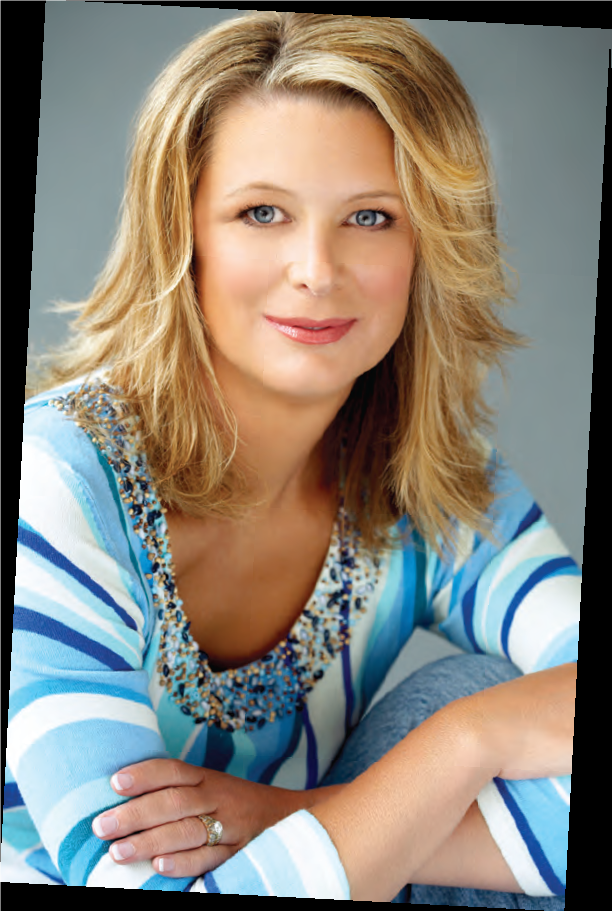
Photo courtesy of Deborah Feingold
to the table is a collection of our experiences and world views, our moral codes and philosophical beliefs…and all of that is often tangled up within our characters.” Like Jude, Hannah’s own personal journey was fueled by the influence of motherhood. She originally had her sights set on becoming an attorney, but when her mother was diagnosed with cancer during her final year of law school, the pair began working on a novel together. Though her mom always insisted that Hannah was destined to be a writer, she didn’t return to the uncompleted manuscript again until she was placed on bed rest during her own pregnancy, desperate for an outlet to pass the time. Jude Farraday’s tendency to always put her children’s needs before her own probably mirrors Hannah’s desire to keep motherhood the utmost priority, even if it meant putting her own writing aspirations on the backburner from time to time as she established her career as a fiction author. “I was in this interesting position of being a working mom who stays at home,” she recalls. “It did require a lot of balancing, but quite honestly I’ve always put motherhood first. As my son got older he needed me around less and less, so I’ve been focusing on my career a lot more in the past ten years.” Indeed, Hannah had already penned 18 novels, most of which delve deep into the complex relationships between women (friends, sisters, mothers, daughters) and how they guide our lives. “These are the relationships that determine how we’re going to live and who we’re going to be, and that has always fascinated me,” she says. Night Road explores the friendship between two teenaged girls and, eventually, the all-consuming passion of first love. Still, Hannah remains true to the maternal character of Jude by repeatedly averting the reader’s attention to her classic inner struggle: what it means to be a good mother. She provokes readers to reflect upon the decisions they make as parents, and how to strike that delicate balance between protecting your children and helping them spread their wings. “It’s a coming-of-age story about kids trying to break free at 18, but it’s also about how we, as mothers, try to keep our children safe,” Hannah says, adding that Night Road really is about motherhood. “Writing it did give me a lot of time to think about the decisions and challenges that 18-year-olds and their parents face. I hope the book could spark a discussion between parents and their kids.” The best piece of advice Hannah has for moms? “Remain open and honest,” she says, and “create an environment where conversation can occur.”
Editor’s Note: Special thanks to Tanya Farrell, Susan Belfer and Nicole Rotunda. Night Road was released this spring by St. Martin’s Press.
You’ve probably heard that NASCAR has become a really big deal. You may even know a couple of closet racing fanatics 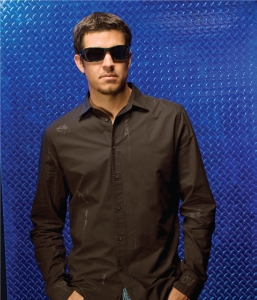 yourself. But let’s be honest— New Jersey is hardly a breeding ground for stock-car racing talent. Well, just don’t tell that to the folks in Ocean County. Every weekend they root for one of their own, MARTIN TRUEX JR., to take the checkered flag against the likes of living legends Jimmie Johnson, Jeff Gordon and another “junior”—Dale Earnhardt. How does a world-class racer go from the dirt tracks of South Jersey to the legendary ovals and super speedways of NASCAR? Turns out, it’s all in the family.
yourself. But let’s be honest— New Jersey is hardly a breeding ground for stock-car racing talent. Well, just don’t tell that to the folks in Ocean County. Every weekend they root for one of their own, MARTIN TRUEX JR., to take the checkered flag against the likes of living legends Jimmie Johnson, Jeff Gordon and another “junior”—Dale Earnhardt. How does a world-class racer go from the dirt tracks of South Jersey to the legendary ovals and super speedways of NASCAR? Turns out, it’s all in the family.
EDGE: Your father was a short-track racing legend in the northeast, and also the local “Clam King”—the owner of a large seafood business here in New Jersey. What do you learn from a family culture like that?
MT: Well, it’s a little bit different from what most people grow up around. My dad was a businessman who raced as a hobby, but he was very serious about it. He had aspirations of moving up and running in the big time—which he did, but he never had the equipment to drive for a living. Obviously he put a lot into it. His passion for racing is one of the things that made him successful in business, because he knew he had to make money to go racing.
EDGE: So you understood the connection between passion and work ethic?
MT: Yes, I did. My dad worked really hard so he could go racing. That’s what I learned from him, that you have to work hard for something. And that to be a racer you really have to want to do it, because there are thousands of people who want to do it, too. You won’t get that chance without working hard and taking it seriously.
EDGE: When you and Martin Sr. talked about racing, did you focus much on the danger of the sport?
MT: No. As a racer you worry about how you can go faster, how you can do better than the guy in front of you. I don’t think anyone who has raced for a long time worries about the danger of it. You’re passionate about winning, and all that other stuff is just secondary.
EDGE: How was the competition in South Jersey when you were growing up?

MT: When I was racing in Jersey it was never what I’d call a “hotbed.” There were only a few places we could go. But there was good competition. So I was able to learn the ropes and refine my techniques at a young age. That had a lot to do with why I became successful.
EDGE: Did you feel at home behind the wheel when you first began competing as a teenager?
MT: Racing was something I was interested in long before I got to do it. The will to get into racing was there for a long time. I was able to learn a lot from my dad—I didn’t just go and watch him race. I really paid attention to what was going on. I hung out in the shop, worked on the cars and tried to learn as much as I could. When I first got into a race car it was second nature. I felt I’d been doing it all my life. It felt natural to me.
EDGE: Your younger brother, Ryan, has gotten off to a fast start in his career. Do you think you two had a similar feel for racing?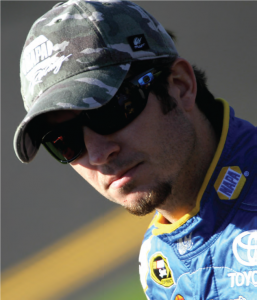
MT: Yeah, I think we did. One day he came to my father and me and said, “I want to race.” We’d never really appreciated his interest in it, but once Ryan started, we could tell that he really knew what he was doing. He had been paying attention, he had been learning—almost with no one even noticing it. Right off the bat he was fast, and right off the bat he’s been winning. When Ryan got into a car, he clearly understood racing. He’s going to be running some Nationwide races this year and he’s only 18! That tells you how quickly he’s learned and how well he’s been able to adapt to different cars in different situations.
EDGE: You won back-to-back Busch championships in 2004 and 2005. Obviously, at that point you knew you could be successful at the top levels of auto racing. Looking back, what was your Eureka Moment—the time when you first thought to yourself, “Oh, man. I can do this!”
MT: As soon as I got in [Dale Earnhardt Jr.’s] Chance 2 car in 2003, I knew right away. The first time we ran, no one was expecting much and I had a shot at winning that race. I knew at that moment that this was my opportunity, and that I had to take advantage of it. I knew we could do it. With the crew we had and the equipment we had, I knew it was possible to win. From that moment on I was able to focus on what I needed to do as a driver and as a member of a team. And I had a great team. So we went into 2004 with a ton of confidence. We knew we could win races…and we ended up winning the championship.
EDGE: At the Daytona 500 in 2010, you were right there at the end, leading the race.
MT: Yeah. We had as good a shot as anyone. We were leading right up until the end. It’s hard to be the leader at the end of the restrictor plate races because you’re kind of a sitting duck.
EDGE: That’s an example of how razor-thin the difference is between winning a race and coming in, say sixth, which you did—just a couple of seconds behind the winner.
MT: It all comes down to circumstances. It takes not only your decisions but the decisions of the other drivers to determine the outcome. If two or three other guys had made different moves, and then I had made a different move, the outcome would have been completely different.
EDGE: Do you look back and say I should have done such-and-such differently?
MT: It’s really hard to second-guess, hard to look back. Obviously I wanted to win the race—that’s what I was there for—but there were 10 or 15 guys who could have won that race! So it’s a little bit of a crapshoot. That’s just the way it goes. You don’t think too much about the past, you just learn from it—and hope you do better the next time and win.
EDGE: One of the great challenges in any sport is filling the shoes of a legend. In 2010, you were hired to replace one of the all-time greats, Michael Waltrip, a two-time winner of the Daytona 500. And you were hired by Michael Waltrip— talk about pressure!
MT: No, working with Michael has just been a blast. When he got out of the car, he wasn’t looking for a guy who was “as good as me”—he was looking for someone he thought was better, because he wants his car to run up front. To have him pick me, that was a cool feeling. To be honest, it reminded me of when I was 18 and my dad was still racing in the Busch North series. We were planning on running a few races together and seeing what happened. We ran one race and he retired. He said, “I realize you’ve got a great opportunity to do what I always wanted to do. I’m going to quit right here and put all I can behind you to get you ready to go.”
EDGE: It’s the NASCAR version of the Circle of Life.
MT: I guess. But I can’t imagine stepping out of the car and handing over the keys, per se, to someone I thought would do a better job. It just blows my mind. I love racing so much, I can’t imagine being in a position where I’d do that. And for my brother Michael, racing’s all he’s known and done. He is so passionate about it. So that really showed his true character—and made me very proud. It makes me want to do a good job for him.
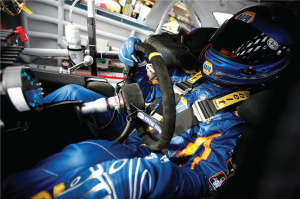 EDGE: The main sponsor of your car is NAPA. Do you have much interaction with them?
EDGE: The main sponsor of your car is NAPA. Do you have much interaction with them?
MT: NAPA Auto Parts has been a huge part of this sport for a long time, so it’s an honor to drive the race car for them and be the face of NAPA. Being a part of the company, of the storeowners and employees, that part’s actually been a lot of fun.
EDGE: Does winning a race ever get old? Do you still get the same thrill you did when you were a teenager?
MT: To be honest, these days, at this level, wins are so much more difficult to come by that it’s better. The harder they are to get the sweeter they are!
EDGE: When you return to New Jersey for the holidays to visit friends and family, is there any one place that is special to you?
MT: The Jersey Mike’s in Manahawkin. My friends and I spent a lot of time in there. You know how on TV you have those restaurants the high school kids use as their hangout place? That was ours. That place will always be special.
EDGE: A lot of people who grow up in Jersey don’t truly appreciate it until they’ve left. What is it about the Garden State that you remember most fondly?
MT: The thing I appreciate, having grown up at the Jersey Shore, is the natural diversity of the state. Where I lived in Ocean County I could go five minutes and be out on the bay fishing, or go five minutes in the other direction and be out in the woods hunting. But with my family being in the seafood business and me loving to fish, the salt water is what I miss the most. Jersey sometimes has a bad reputation, but if you ask me, it’s a pretty great place to live.
A New Jersey attorney inspires a hit TV series
Thanks to Nelson Johnson, you’ll never look at Atlantic City the same way again. The attorney for the Atlantic City Planning Board during the casino boom of the early 1980s, Johnson was inspired to write about the history of the town that began as a tranquil seaside health resort and became a playground for the mob. His research resulted in a book entitled Boardwalk Empire: The Birth, High Times, and Corruption of Atlantic City (Plexus Publishing, $16.95)—and provided the inspiration for HBO’s critically acclaimed series Boardwalk Empire. Prior to Boardwalk Empire, Nelson’s name was unknown in the literary world. However, no author in the Garden State is more qualified to write with authority on matters of crime and punishment in AC. The Hammonton resident just happens to be a Superior Court Judge in Atlantic County. Judge Johnson’s book is the result of two decades of research, dozens of eyewitness interviews and extensive fact- checking. Boardwalk Empire chronicles the highlights and lowlights of the corrupt politicians who came to rule Atlantic City when the town’s sole purpose was providing a good time to its visitors (legally or not). Nucky Thompson, played by Steve Buscemi, is based on Nucky Johnson, the second of three bosses to lead the political machine that dominated city politics, funded by payoffs from bars, brothels, and bootlegging. The real-life Nucky ruled the town for three decades starting in the years prior to World War I. When the author’s manuscript (originally dubbed “Nucky’s Town”) found its way into the hands of John Bryans at Plexus nearly a decade ago, the publisher knew it would sell based on the company’s success with similar regional projects. Johnson always believed it could be more, despite fruitless trips to Hollywood to pitch the story as a feature film or documentary. Fortunately, Johnson did catch the attention of an agent, and in 2006 Bryans received an e-mail from an HBO television executive who was salivating for the rights to a book revolving around shocking backdoor politics, explosive violence, and fatal power struggles. The HBO series debuted on September 19th, 2010, starring Buscemi, Michael Pitt and Kelly Macdonald. The show features the creative talents of Terence Winter, writer on The Sopranos, and Mark Wahlberg as producer; Martin Scorsese directed the first episode. Winter also penned the foreword for the new edition of the book. As a sitting judge, the author has backed away from interviews publicizing the book or the HBO series. However, according to Bryans, upon initial publication, Boardwalk Empire sold roughly 10,000 copies. Thanks to the buzz created by HBO, another 10,000 flew off the shelves. An order for another 85,000 copies, updated to be a tie-in edition, followed. The book concerns itself with a much broader sweep of material than the more narrowly focused series, which, as Bryans points out, focuses on “sex, violence, and swearing.” That being said, the seedy underbelly of Atlantic City is fully exposed in Johnson’s book—often with the aid of stunningly blunt first-person accounts. As one mob connected interview subject observed, “If the people who came to town had wanted Bible readings, we’d have given ’em that…they wanted booze, broads and gambling, so that’s what we gave ’em.” Regarding the HBO series, Bryans has liked what he sees on the small screen. “The show helps you realize that Nucky is a complex, fascinating character, and one you love to hate,” he says. “It’s nice to see that people are open to shades of gray.” “If you delve into the history of any major city in New Jersey,” Bryans maintains, “you’ll probably find the basis for a book. I think Boardwalk Empire makes everyone start thinking about the birth of their own hometown.” EDGE
checking. Boardwalk Empire chronicles the highlights and lowlights of the corrupt politicians who came to rule Atlantic City when the town’s sole purpose was providing a good time to its visitors (legally or not). Nucky Thompson, played by Steve Buscemi, is based on Nucky Johnson, the second of three bosses to lead the political machine that dominated city politics, funded by payoffs from bars, brothels, and bootlegging. The real-life Nucky ruled the town for three decades starting in the years prior to World War I. When the author’s manuscript (originally dubbed “Nucky’s Town”) found its way into the hands of John Bryans at Plexus nearly a decade ago, the publisher knew it would sell based on the company’s success with similar regional projects. Johnson always believed it could be more, despite fruitless trips to Hollywood to pitch the story as a feature film or documentary. Fortunately, Johnson did catch the attention of an agent, and in 2006 Bryans received an e-mail from an HBO television executive who was salivating for the rights to a book revolving around shocking backdoor politics, explosive violence, and fatal power struggles. The HBO series debuted on September 19th, 2010, starring Buscemi, Michael Pitt and Kelly Macdonald. The show features the creative talents of Terence Winter, writer on The Sopranos, and Mark Wahlberg as producer; Martin Scorsese directed the first episode. Winter also penned the foreword for the new edition of the book. As a sitting judge, the author has backed away from interviews publicizing the book or the HBO series. However, according to Bryans, upon initial publication, Boardwalk Empire sold roughly 10,000 copies. Thanks to the buzz created by HBO, another 10,000 flew off the shelves. An order for another 85,000 copies, updated to be a tie-in edition, followed. The book concerns itself with a much broader sweep of material than the more narrowly focused series, which, as Bryans points out, focuses on “sex, violence, and swearing.” That being said, the seedy underbelly of Atlantic City is fully exposed in Johnson’s book—often with the aid of stunningly blunt first-person accounts. As one mob connected interview subject observed, “If the people who came to town had wanted Bible readings, we’d have given ’em that…they wanted booze, broads and gambling, so that’s what we gave ’em.” Regarding the HBO series, Bryans has liked what he sees on the small screen. “The show helps you realize that Nucky is a complex, fascinating character, and one you love to hate,” he says. “It’s nice to see that people are open to shades of gray.” “If you delve into the history of any major city in New Jersey,” Bryans maintains, “you’ll probably find the basis for a book. I think Boardwalk Empire makes everyone start thinking about the birth of their own hometown.” EDGE
Editor’s Note: Boardwalk Empire (the series) was renewed for a second season just 48 hours after it debuted on HBO. For more information on Judge Johnson and Boardwalk Empire (the book) log onto boardwalkempire.com. Johnson has already begun work on his next book, The Northside: African Americans and the Creation of Atlantic City.
What happens in Vegas stays in Vegas. Well, that is not entirely accurate. Actress RUTINA WESLEY, one of the stars of the HBO series True Blood, did not 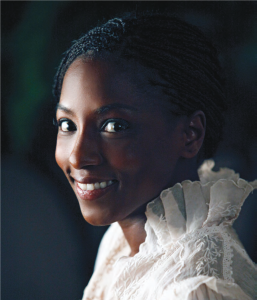 stay. The daughter of professional dancers, the Las Vegas born-and-bred Wesley took her show on the road—first to the University of Evansville as an undergrad and then to the Juilliard School in New York. Along the way, Wesley also studied at London’s Royal Academy of Dramatic Art. A plum role on Broadway in David Hare’s The Vertical Hour and the lead in the 2007 dance film How She Move earned her an audition for Alan Ball, who was casting the tricky role of Tara Thornton in True Blood. The depth she brought to the character not only won her the part, it has since made Wesley one of the most popular characters on television. EDGE Assignments Editor Zack Burgess took the actress back to Las Vegas to talk about her show business roots and inspirations, and to explore the imaginative and eclectic Rutina Look (his words, not hers). The ground rules for the interview? Only one “vampire question” allowed (our rules, not hers). Oh, the pressure! As usual, Zack saved the best for last.
stay. The daughter of professional dancers, the Las Vegas born-and-bred Wesley took her show on the road—first to the University of Evansville as an undergrad and then to the Juilliard School in New York. Along the way, Wesley also studied at London’s Royal Academy of Dramatic Art. A plum role on Broadway in David Hare’s The Vertical Hour and the lead in the 2007 dance film How She Move earned her an audition for Alan Ball, who was casting the tricky role of Tara Thornton in True Blood. The depth she brought to the character not only won her the part, it has since made Wesley one of the most popular characters on television. EDGE Assignments Editor Zack Burgess took the actress back to Las Vegas to talk about her show business roots and inspirations, and to explore the imaginative and eclectic Rutina Look (his words, not hers). The ground rules for the interview? Only one “vampire question” allowed (our rules, not hers). Oh, the pressure! As usual, Zack saved the best for last.
EDGE: You grew up in a town that isn’t always known for its taste, but it is definitely known for its style.
RW: True.
EDGE: Yet you seem to have developed a keen sense for both. How did that happen?
RW: Being the daughter of a mother who was a professional dancer had a definite influence. My mother loves to dress and she has a great sense of style, with the feathers and colors and all. I can go in any direction, from elegant to tomboyish. I think traveling as much as I have has helped, as well.
EDGE: Does your sense of style come naturally or is it something that you have to plan and work on?
RW: A little bit of both. I’m a chameleon with my style because there are so many things I like; it’s hard for me to choose. I love to glam it up for events and wear things that I can’t in everyday life, but I also love to run around in jeans and sneakers, especially since I’m secretly a sneaker freak.
EDGE: Is there a story behind the Rutina Look?
RW: I definitely consider myself a New York girl. I just like the style of New York. There really is no story behind my look. I just think I have a good sense of what makes good and bad fashion—although I have been known to take risk with fashion from time to time.
EDGE: Who are some of the designers that you like?
RW: Jean Paul Gaultier, Cynthia Vincent, Stacey Bendet [Alice & Olivia], Versace, Tadashi—there are just too many to name. I like a variety. It’s nice to switch it up every once in a while.
EDGE: Were there actors you felt drawn to as a girl—any that you wanted to model yourself after?
RW: Of course. Angela Bassett, Viola Davis, Meryl Streep and Julia Roberts come to mind. I consider them all people who carry themselves with dignity and class, and who have mastered their craft.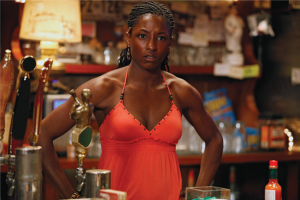
EDGE: On True Blood, there is a lot of grittiness to your character, Tara, in the face of unimaginable danger and evil. Where do you reach down and pull that from?
RW: I know a few people who were forced to grow up too fast because of something that happened in their lives. I tend to draw from the stories I’ve heard from them. I’ll just take myself to these dark places and use my imagination, to picture what it would be like to grow up in a home that was abusive and volatile, try to think of how that would make me feel. I do always try to come from a place of honesty and humanity, because I don’t want it to be too over-the-top. A lot of the time, though, I can get a true sense of things from the words I’m given in the script. I’m lucky to be working with some amazing writers.
EDGE: Talk about the performing arts school you attended in Vegas. People picture Fame on the Strip. What was the reality like?
RW: Yeah, I can see how people would think that. You know what our first play was? Fame! It was a ton of fun. We were always doing something. Whether we were singing songs from Grease or performing Shakespeare, I love Shakespeare, it was definitely a wonderful experience. It prepared me for what was to come and fueled my desire and drive to become who I am today.
EDGE: What percentage of your classmates had parents who were entertainers, as you did?
RW: Not many at all. Most of the kids’ parents either worked on the Strip or had their own businesses.
EDGE: You mentioned your mother’s influence. In what ways has your father helped your career?
RW: Both of my parents prepared me for what to expect as I made my way in this business. My father was always there to say make sure you read something before you sign it, and makes sure you have a lawyer.
EDGE: Was acting your first love?
RW: I would have to say dance was my first love. But I had to choose, and acting just made more sense. With acting I can do so many things. I can even dance if I want to. I can always dance in a musical.
EDGE: After earning your theater degree at Evansville, you made the quantum leap to Juilliard. Looking back, can you identify the performances that won you a spot there?
RW: At Evansville we did a lot of Shakespeare, and we had to perform many monologues, which they knew about at Juilliard. So they made me do all of them, which is amazing when you think about it.
EDGE: Looking back, which Juilliard teachers played key roles in your development as an actress?
RW: John Stix and Richard Feldman were very influential.
EDGE: Is Juilliard harder to get in or stay in? And who were some of the teachers who were influential in your development as a performer?
RW: Both are hard! They used to have a cut rule, but they don’t anymore, which is good. That way you can really concentrate on your craft and not worry about being sent home. It was definitely challenging, but worth every minute of my time. It was fun—just an awesome experience. I met lifelong friends there. I met my husband there. It was, and has been, one of the greatest experiences of my life. Recently I was walking with a friend from high school and he reminded me that I once said that I would go to Juilliard. I didn’t remember that. He reminded me that I was living out my dream. I couldn’t help but start crying right there on the streets of New York.
EDGE: When you were cast in The Vertical Hour on Broadway, what kind of expectations did you have in terms of building a personal or professional relationship with Julianne Moore?
RW: None really. But she was nothing but exceptional to work with and be around. It was a small cast, so we really became like a family. To work with Julianne and Bill Nighy, who is a true professional, was a remarkable experience. And to work with people you admire and to have them treat you well, it was such a pleasant experience. I have nothing but positive memories of working with Julianne and being around her.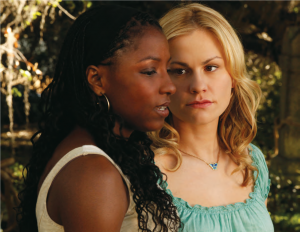
EDGE: What did you learn about the craft from her?
RW: Her work ethic was amazing. The way Julianne immersed herself in her character was a very good thing to see. She works so hard at her craft that it can’t help but rub off on you—especially if you are willing to learn. She’s a risk-taker. She’s not afraid to do different things with a character.
EDGE: In what ways did the director, Sam Mendes, have an impact on your approach to performing?
RW: He was always working to get the best out of you. He forced—and allowed—me to stretch as an actress. Which is what good directors do.
EDGE: Juilliard connections can take you in any number of directions. In your case, it led to your part on True Blood, through a classmate, Nelsan Ellis, who is now your co-star.
RW: Yes, we have known each other forever and have been good friends throughout. So it was great when he recommended me for the part. It was so natural because he knew my work and what I was capable of. When I found out I got the part I was driving out of a Starbucks parking lot. I was so excited I almost crashed the car. So I pulled over and just started screaming.
EDGE: Is it fun being a celebrity?
RW: It’s fun. Although I still have a hard time considering myself a celebrity. But in this business if you are being recognized for what you do, it’s a sign that you are doing well. And so far, it has been very good to me and I am enjoying it. I consider myself fortunate.
EDGE: Final question. Would you rather be trapped in a room with a vampire or a Hollywood agent?
RW: I would have to say a vampire. At least with a vampire, I think I’d have a chance of surviving. EDGE
Editor’s Note: Rutina Wesley was hailed in a 2008 New York Times profile for her “reedy voice and crackling energy,” as well as the subtlety she brings to the role of Tara. Wesley and her fellow True Blood cast members earned a Dramatic Ensemble nomination at the 2010 SAG Awards.
Home is where the heart is. And your main artery is Route 22.
Reunions can be tricky business. In this era of e-blasts, e-vites and e-stalking, we tend to overlook the raw courage it often takes to actually show up and confront your past face-to-face. P.F. Kluge’s new novel, A Call from Jersey, is all about reunions. Not just the familiar “Class of…” gatherings that roll around every half-decade or so. The author casts his net wide to examine reunions of all shapes and sizes, ultimately tugging at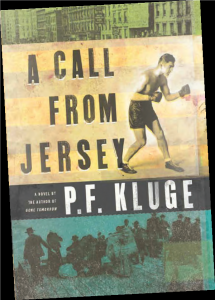 the very nature of estrangement and reconciliation. The Union County hamlet of Berkeley Heights serves as the epicenter for much of A Call from Jersey. Kluge is an unapologetic Jersey Boy with an intimate understanding of the suburban landscape. The story, much of it set in the 1980s, stretches across generations and cultures—and occasionally through the Holland Tunnel—to connect a father and son so preoccupied with how their lives have turned out that they can barely manage an adult conversation when they’re together. Gentle ironies define this relationship. Hans, a seventy-something German- American, is feeling lost in America. His son, George, is a travel writer capable of describing the exotic and mundane with equal aplomb, yet can’t quite put his finger on exactly where, or even what, “home” is. Kluge, it’s worth noting, is the man who supplied the literary inspiration for a pair of iconic films, Dog Day Afternoon and Eddie and the Cruisers. The former, about a Brooklyn bank robbery gone agonizingly awry, starred Al Pacino, fresh off Serpico and his two Godfather triumphs. The latter, about a fictional 1960s Jersey rock band, probably qualifies as a cult classic; certainly that’s true here in the Garden State. From a storytelling standpoint, the most appealing aspect of Eddie—the book and the film—is how effortlessly the narrative moves between past and present. Kluge utilizes time-shifting to great effect again in A Call from Jersey, transporting readers back to the 1930s in order to cobble together a kind of baseline for his characters. There we meet a young Hans, fresh off the boat from Germany, determined to shed his “greenhorn” label and start an American family. As the gap narrows between Hans and George, both timewise and relationship-wise, the author fills in the pertinent details to set up the surprise finish. The most distinctive aspect of A Call from Jersey is how comfortable Kluge is in his two different skins. The book is narrated in the first person, but alternates between Hans and George. The pressure of getting it right for two characters, says Kluge, is outweighed by the advantages of writing in multiple voices. “When you are writing, you are faced with that choice between first and third person,” he explains. “The first person is attractive to young writers because you can put a lot of yourself into the persona of the narrator. That’s fine, except there are certain places you can’t go. You can’t ‘play the field’—you’re a little bit stuck with that one person. The third person offers a larger palette, but you are at a distance from the characters.” “I like the idea of alternating first person narrators, though it’s not without problems. The voices have to be persuasive and can’t be too much alike. That challenged me, but I like it when it works. It combines the advantages of first and third person.” As Kluge’s two main characters stumble toward a long-neglected father-son reunion, they also pursue reunions of their own. George, feeling lost in his late 30s, is staring down the barrel of his 20th with that familiar mix of expectation and anxiety. Kluge, it is worth noting, is headed toward his 50th reunion this fall. In his case, it’s a not-insignificant trip from Gambier, Ohio, where he is Writer in Residence at Kenyon College. “The reason I faithfully attend my high school reunions is to see how lives are turning out,” he explains. “It’s what writers do. At a certain point, elements of competition, appearance and accomplishment dominate reunions. But over time it mellows out. You just want to stare at people and remember and connect. Reunions are about wanting to belong to that same bunch you had in the beginning. Or what’s left of it.”
the very nature of estrangement and reconciliation. The Union County hamlet of Berkeley Heights serves as the epicenter for much of A Call from Jersey. Kluge is an unapologetic Jersey Boy with an intimate understanding of the suburban landscape. The story, much of it set in the 1980s, stretches across generations and cultures—and occasionally through the Holland Tunnel—to connect a father and son so preoccupied with how their lives have turned out that they can barely manage an adult conversation when they’re together. Gentle ironies define this relationship. Hans, a seventy-something German- American, is feeling lost in America. His son, George, is a travel writer capable of describing the exotic and mundane with equal aplomb, yet can’t quite put his finger on exactly where, or even what, “home” is. Kluge, it’s worth noting, is the man who supplied the literary inspiration for a pair of iconic films, Dog Day Afternoon and Eddie and the Cruisers. The former, about a Brooklyn bank robbery gone agonizingly awry, starred Al Pacino, fresh off Serpico and his two Godfather triumphs. The latter, about a fictional 1960s Jersey rock band, probably qualifies as a cult classic; certainly that’s true here in the Garden State. From a storytelling standpoint, the most appealing aspect of Eddie—the book and the film—is how effortlessly the narrative moves between past and present. Kluge utilizes time-shifting to great effect again in A Call from Jersey, transporting readers back to the 1930s in order to cobble together a kind of baseline for his characters. There we meet a young Hans, fresh off the boat from Germany, determined to shed his “greenhorn” label and start an American family. As the gap narrows between Hans and George, both timewise and relationship-wise, the author fills in the pertinent details to set up the surprise finish. The most distinctive aspect of A Call from Jersey is how comfortable Kluge is in his two different skins. The book is narrated in the first person, but alternates between Hans and George. The pressure of getting it right for two characters, says Kluge, is outweighed by the advantages of writing in multiple voices. “When you are writing, you are faced with that choice between first and third person,” he explains. “The first person is attractive to young writers because you can put a lot of yourself into the persona of the narrator. That’s fine, except there are certain places you can’t go. You can’t ‘play the field’—you’re a little bit stuck with that one person. The third person offers a larger palette, but you are at a distance from the characters.” “I like the idea of alternating first person narrators, though it’s not without problems. The voices have to be persuasive and can’t be too much alike. That challenged me, but I like it when it works. It combines the advantages of first and third person.” As Kluge’s two main characters stumble toward a long-neglected father-son reunion, they also pursue reunions of their own. George, feeling lost in his late 30s, is staring down the barrel of his 20th with that familiar mix of expectation and anxiety. Kluge, it is worth noting, is headed toward his 50th reunion this fall. In his case, it’s a not-insignificant trip from Gambier, Ohio, where he is Writer in Residence at Kenyon College. “The reason I faithfully attend my high school reunions is to see how lives are turning out,” he explains. “It’s what writers do. At a certain point, elements of competition, appearance and accomplishment dominate reunions. But over time it mellows out. You just want to stare at people and remember and connect. Reunions are about wanting to belong to that same bunch you had in the beginning. Or what’s left of it.”
Editor’s Note: A Call from Jersey was published by The Overlook Press in September 2010. The author’s previous novel, Gone Tomorrow, was named one of the best books of 2008 by NPR.


